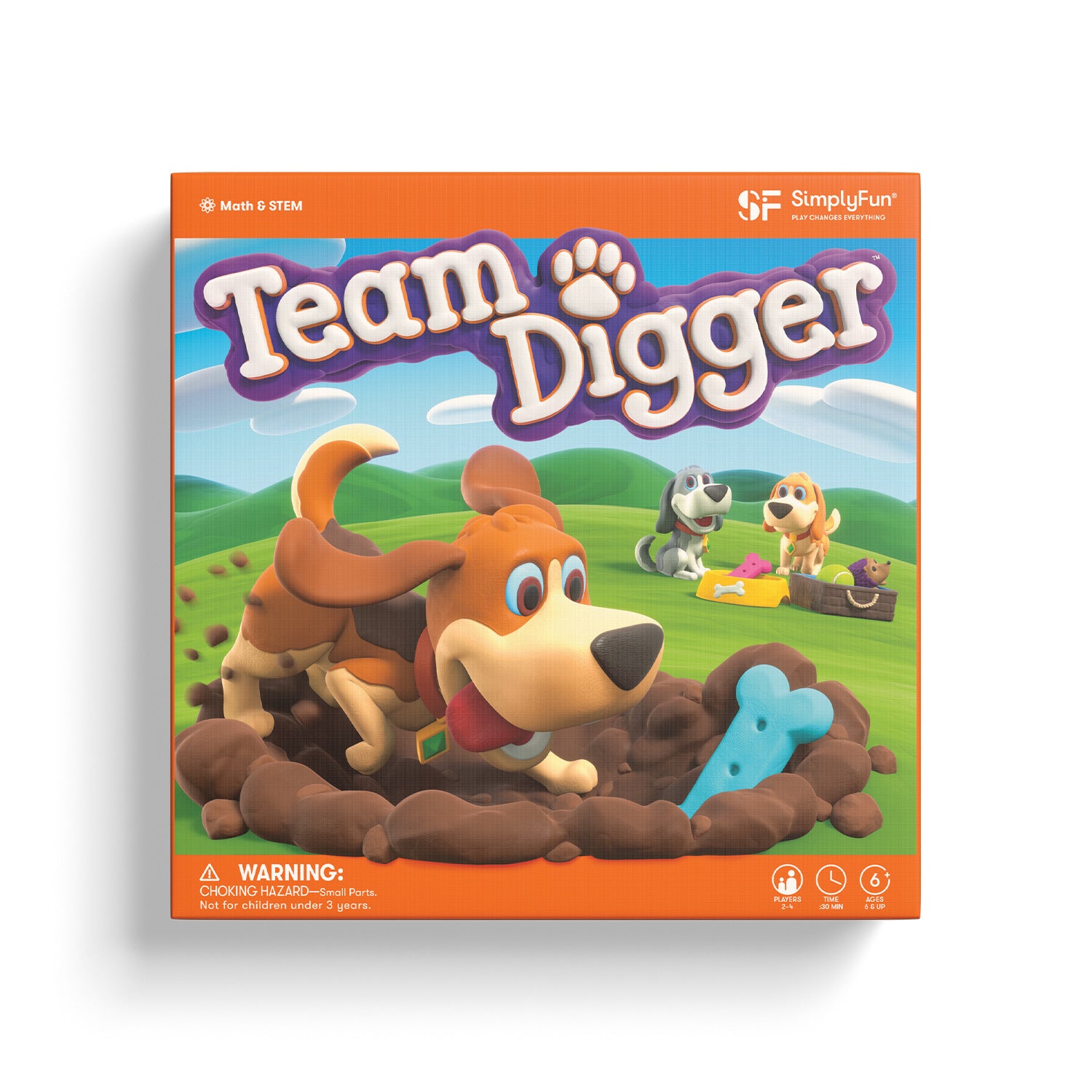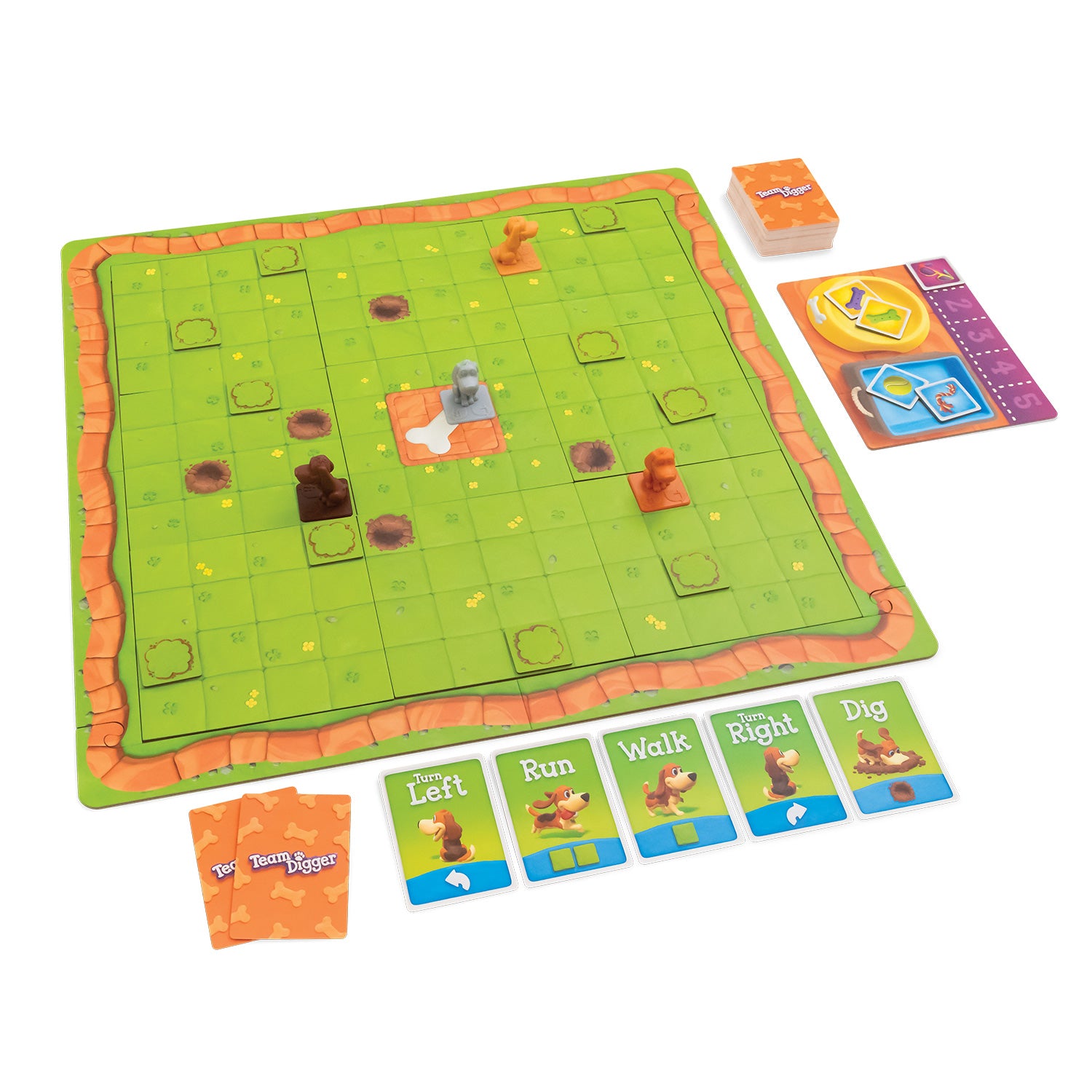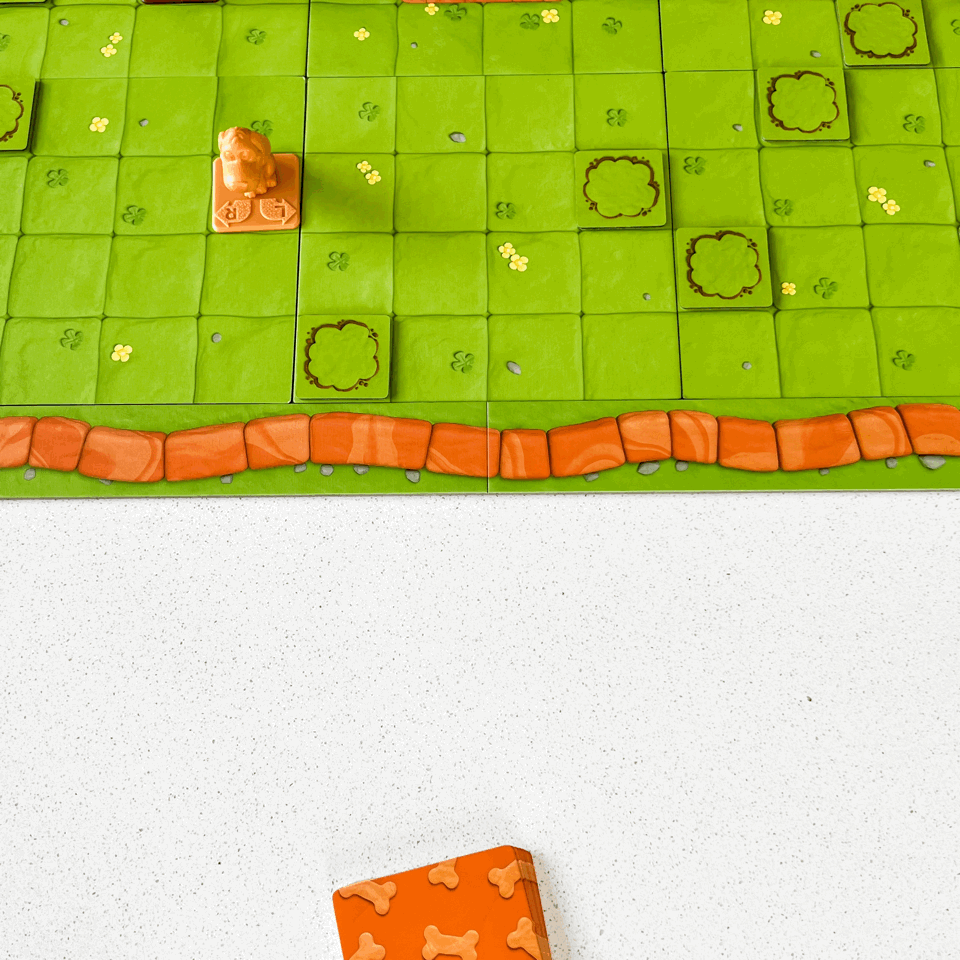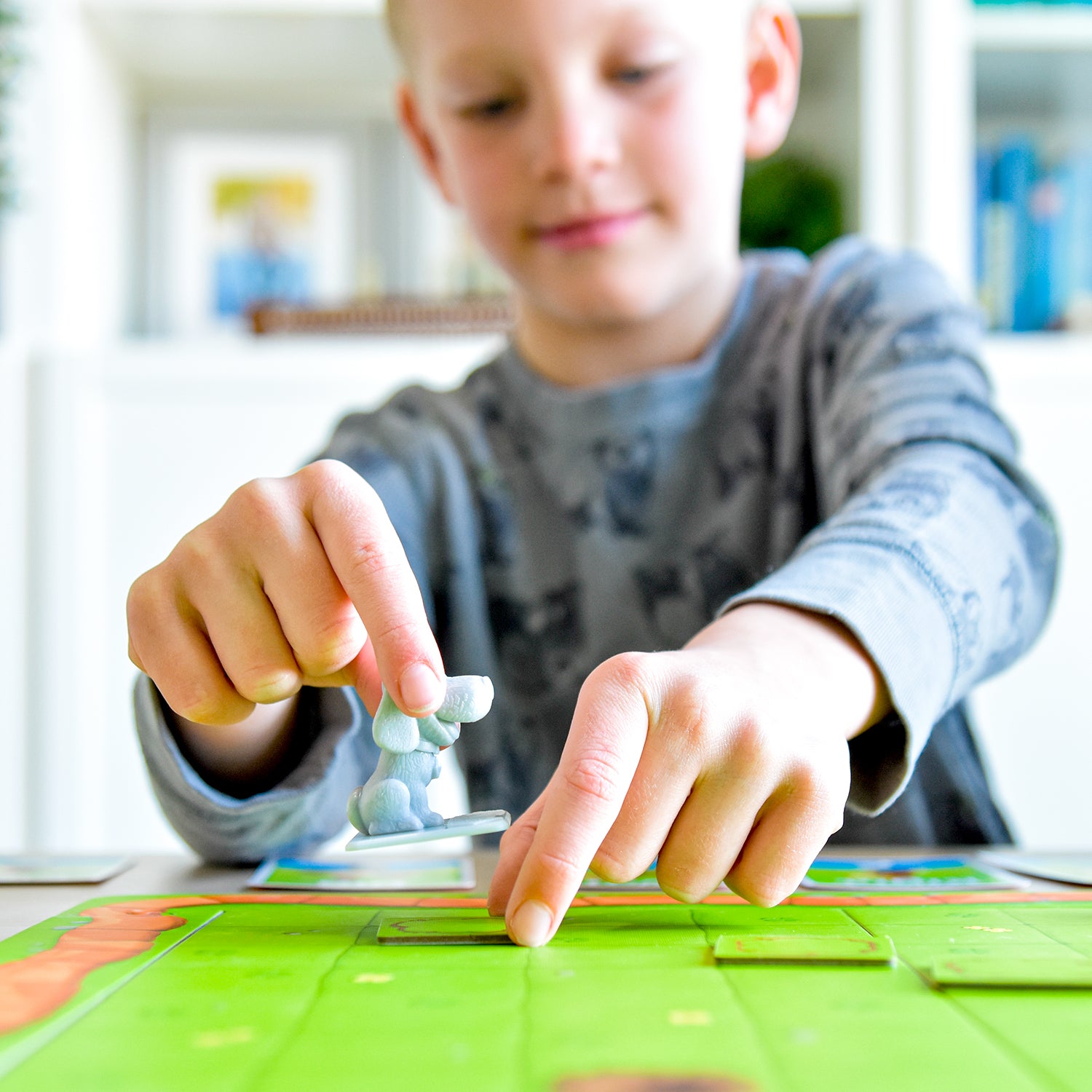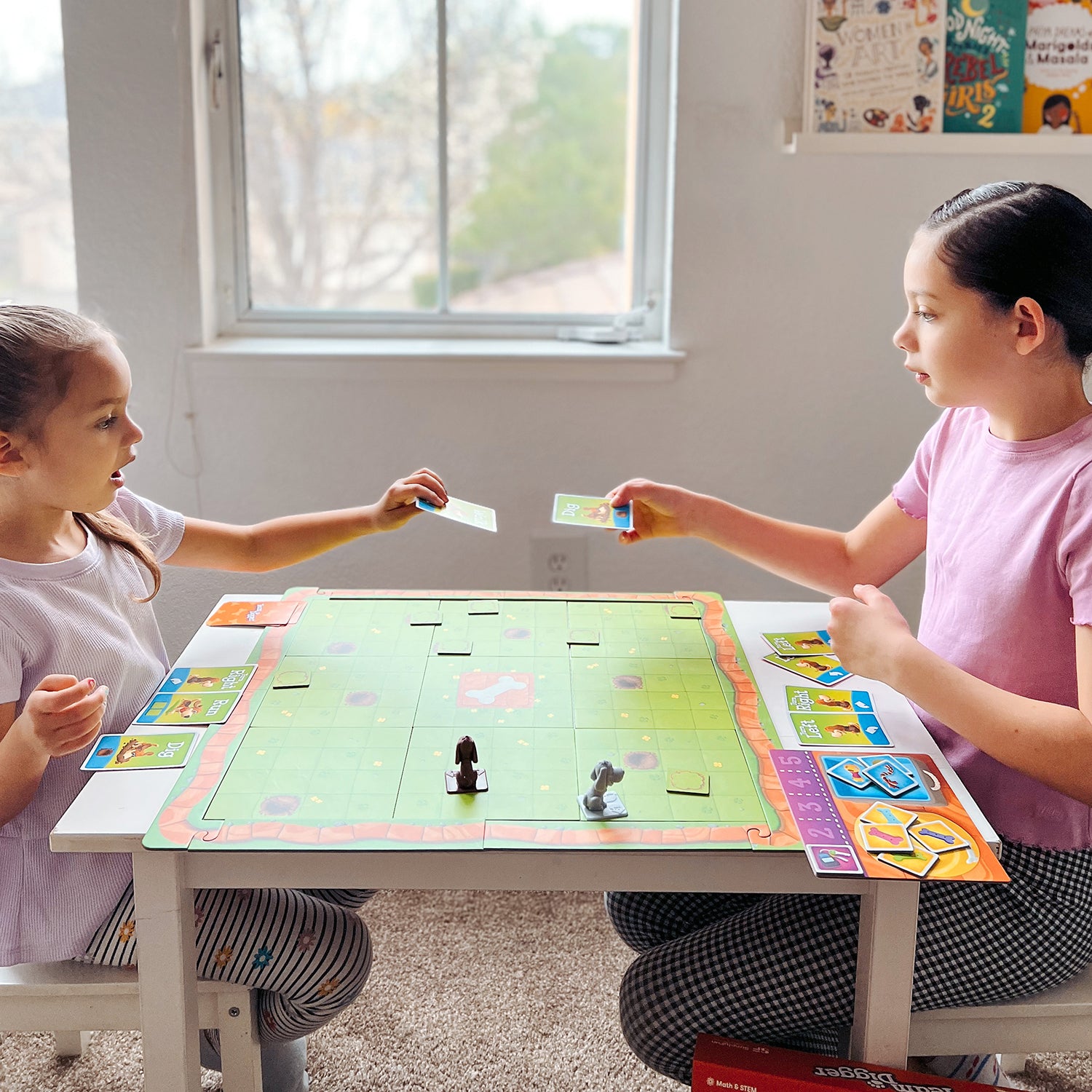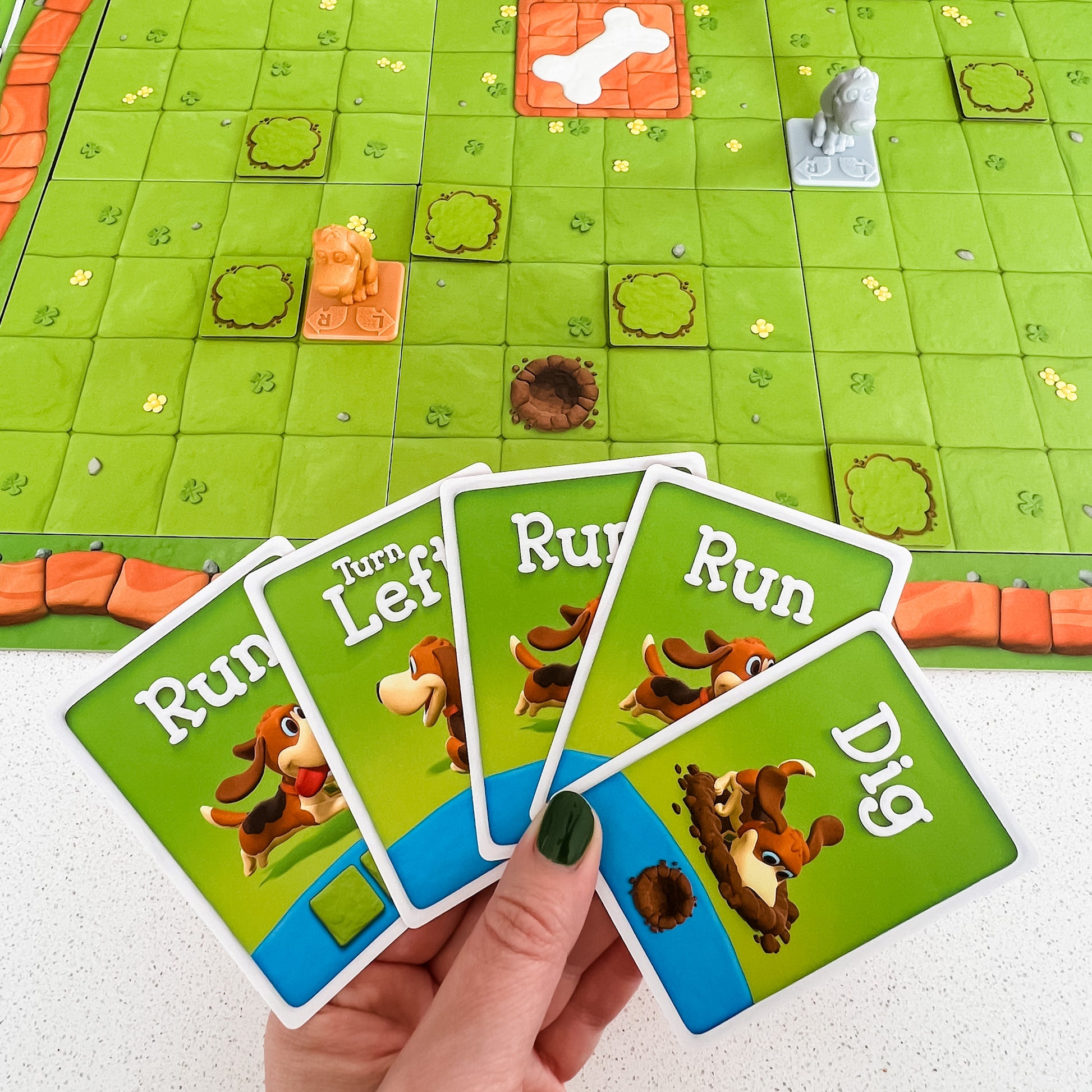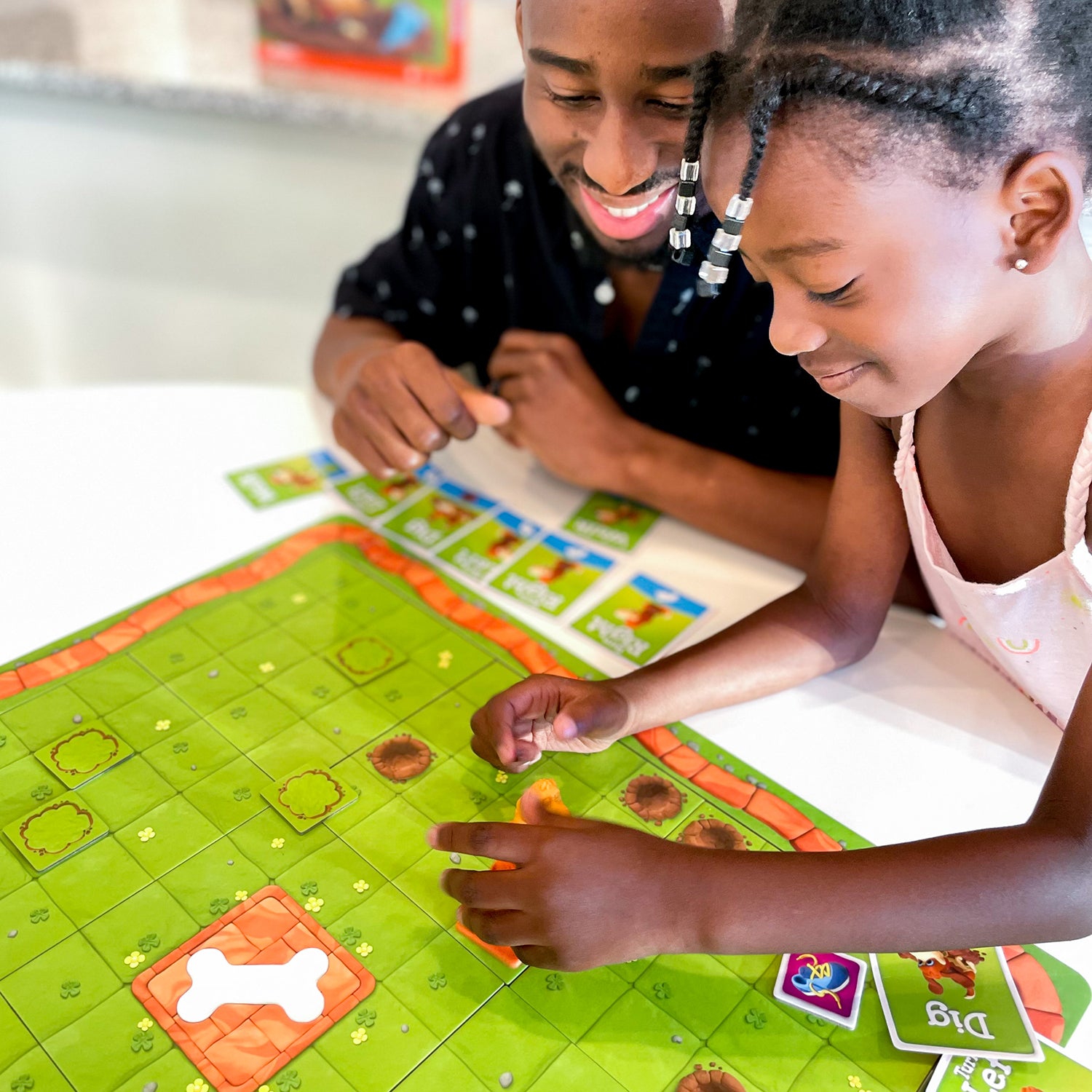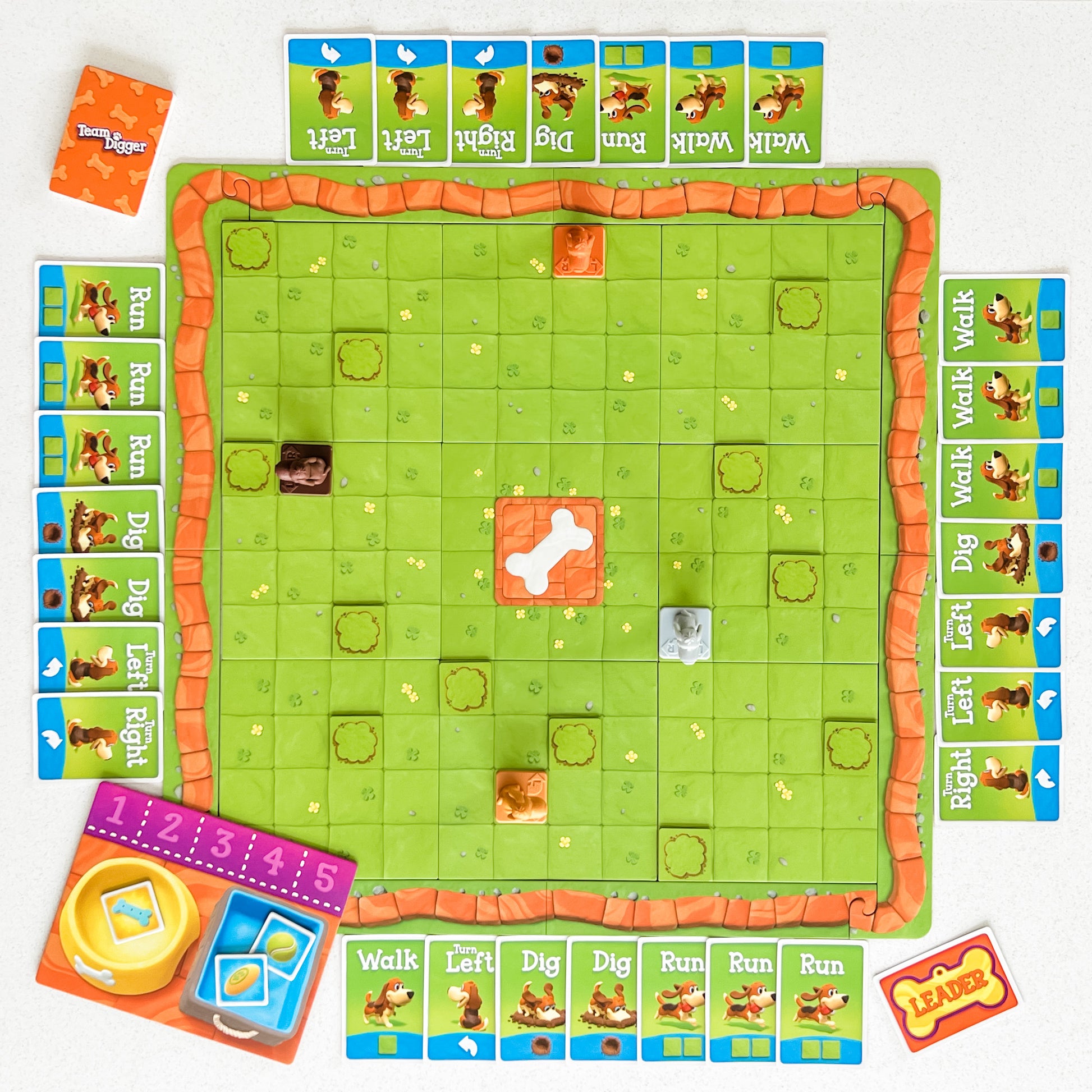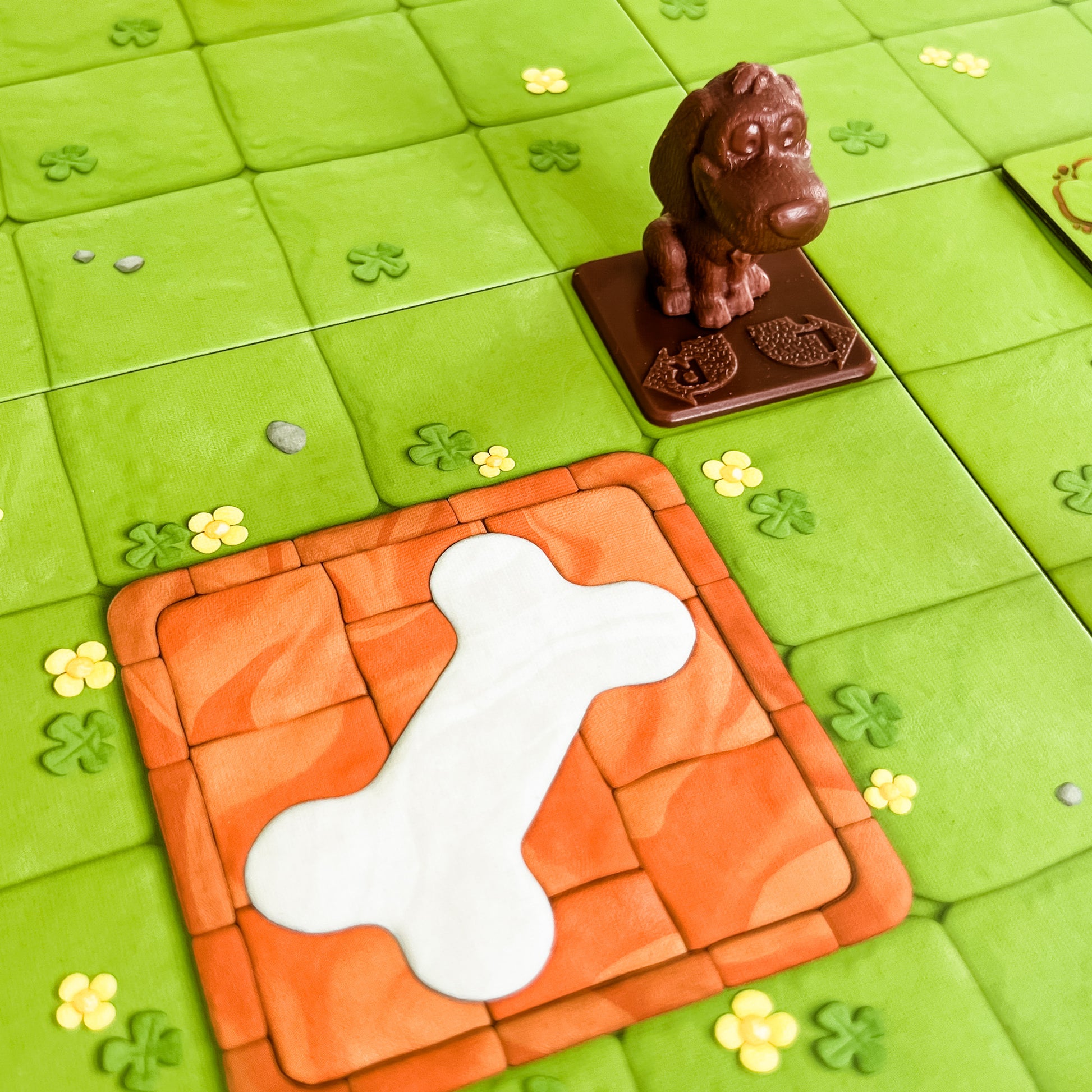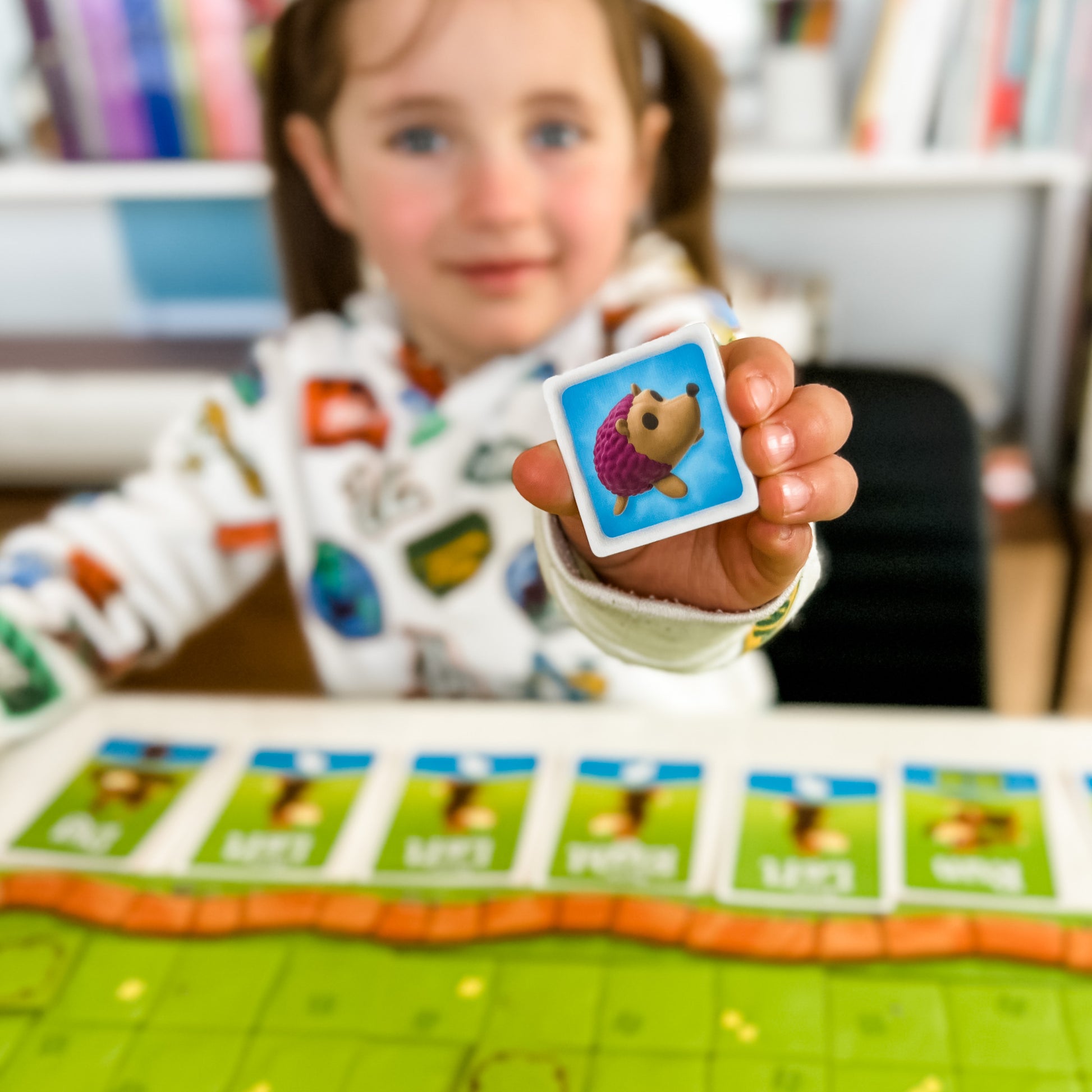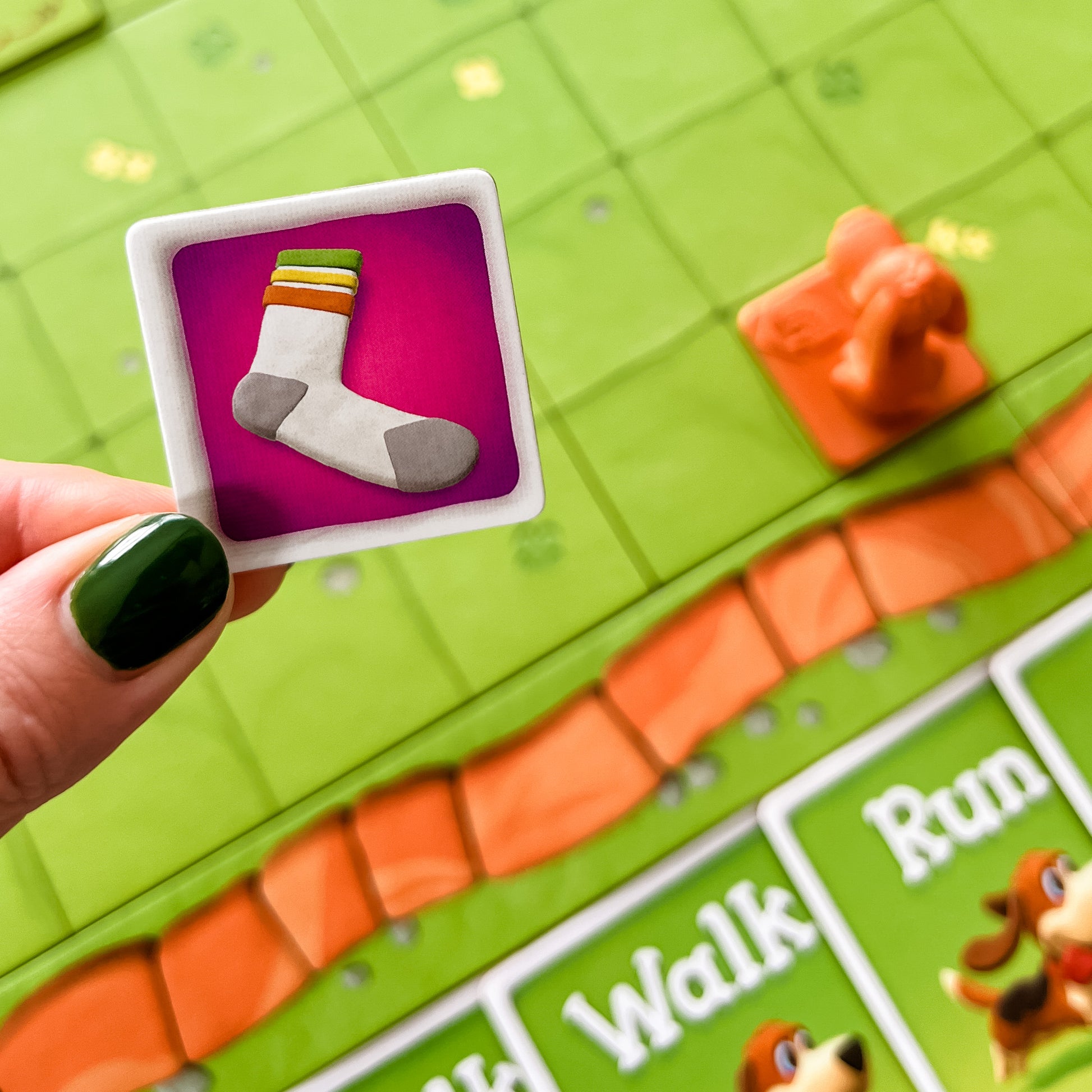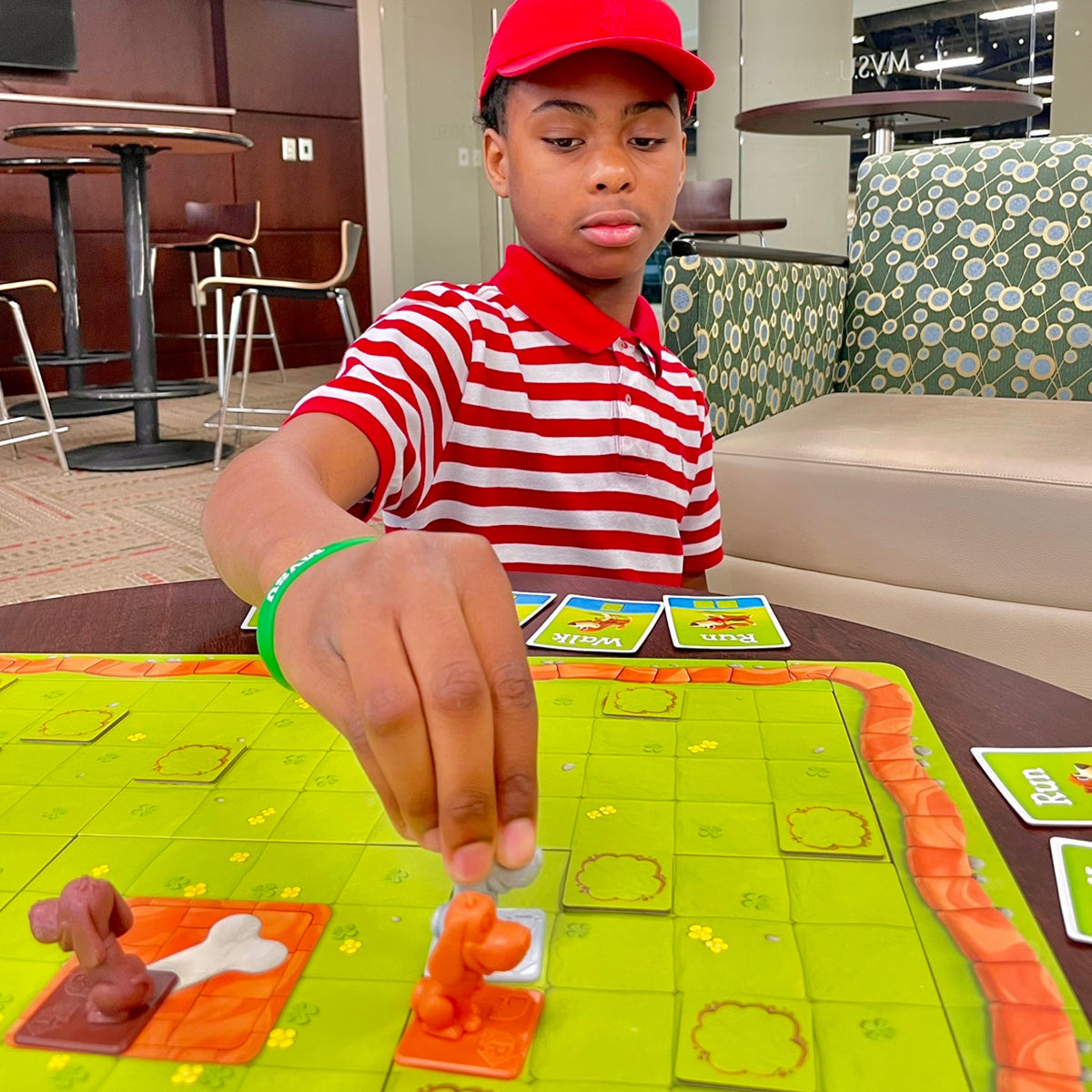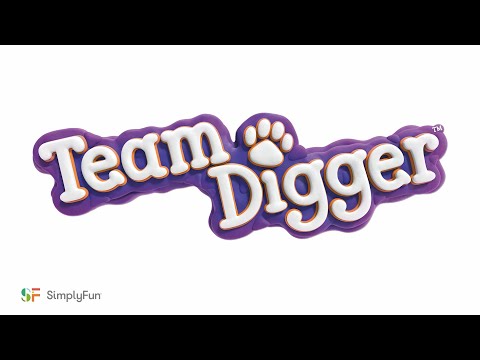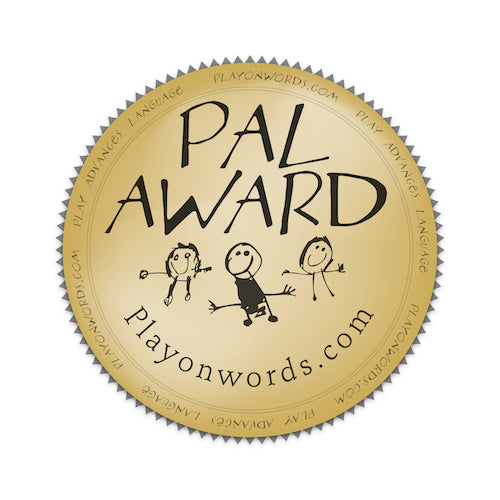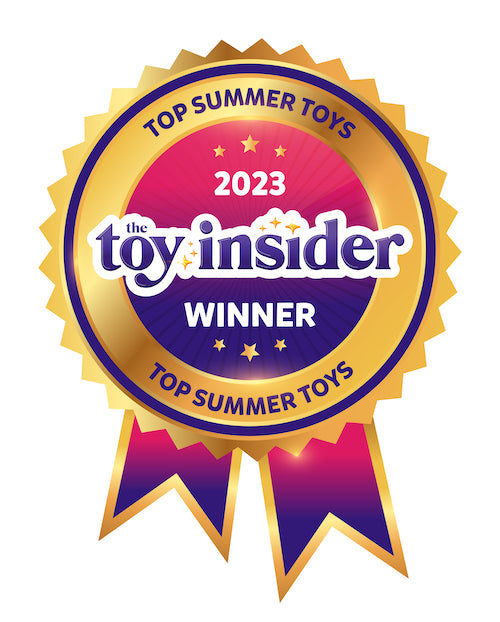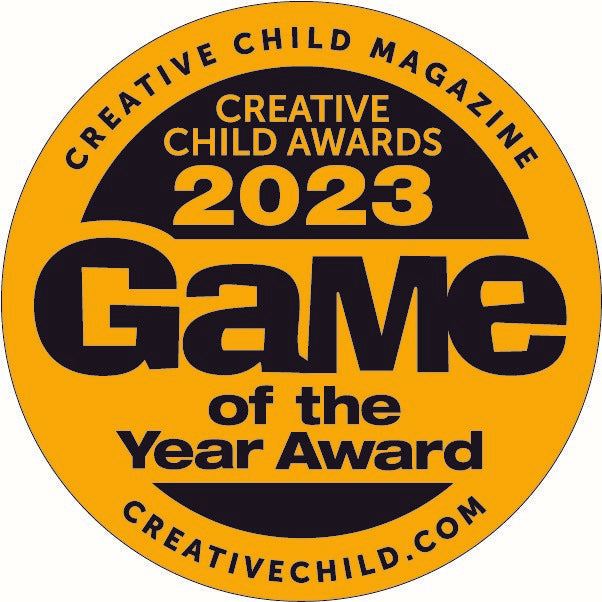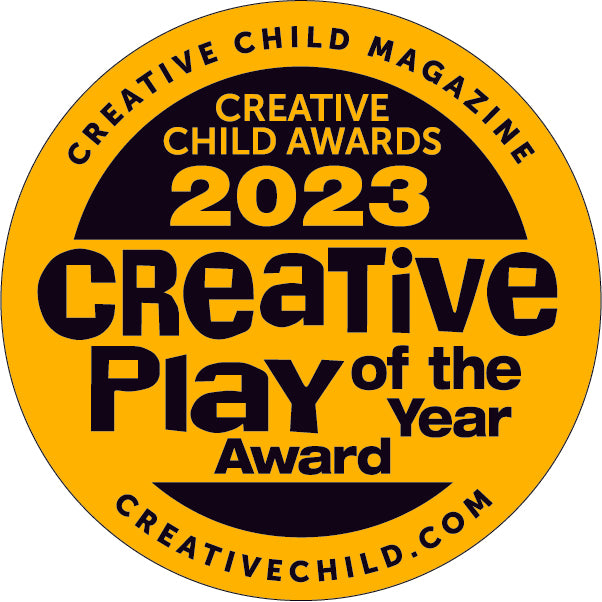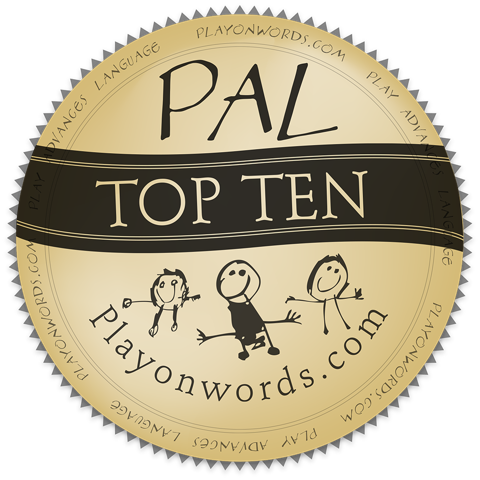Team Digger
Team Digger
2-4 players • 30 min • 6 & up
Focus: Coding
Couldn't load pickup availability
Skills: Sequencing, Spatial Reasoning
Game Includes
Game Includes
- 9 Dog Park Boards
- 1 Gameboard Frame
- 4 Dog Pawns
- 80 Cards
- 15 Object Tiles
- 1 Collection Board
- 1 Cover Tile
- 1 Leader Card
- 1 Rules Booklet
Share
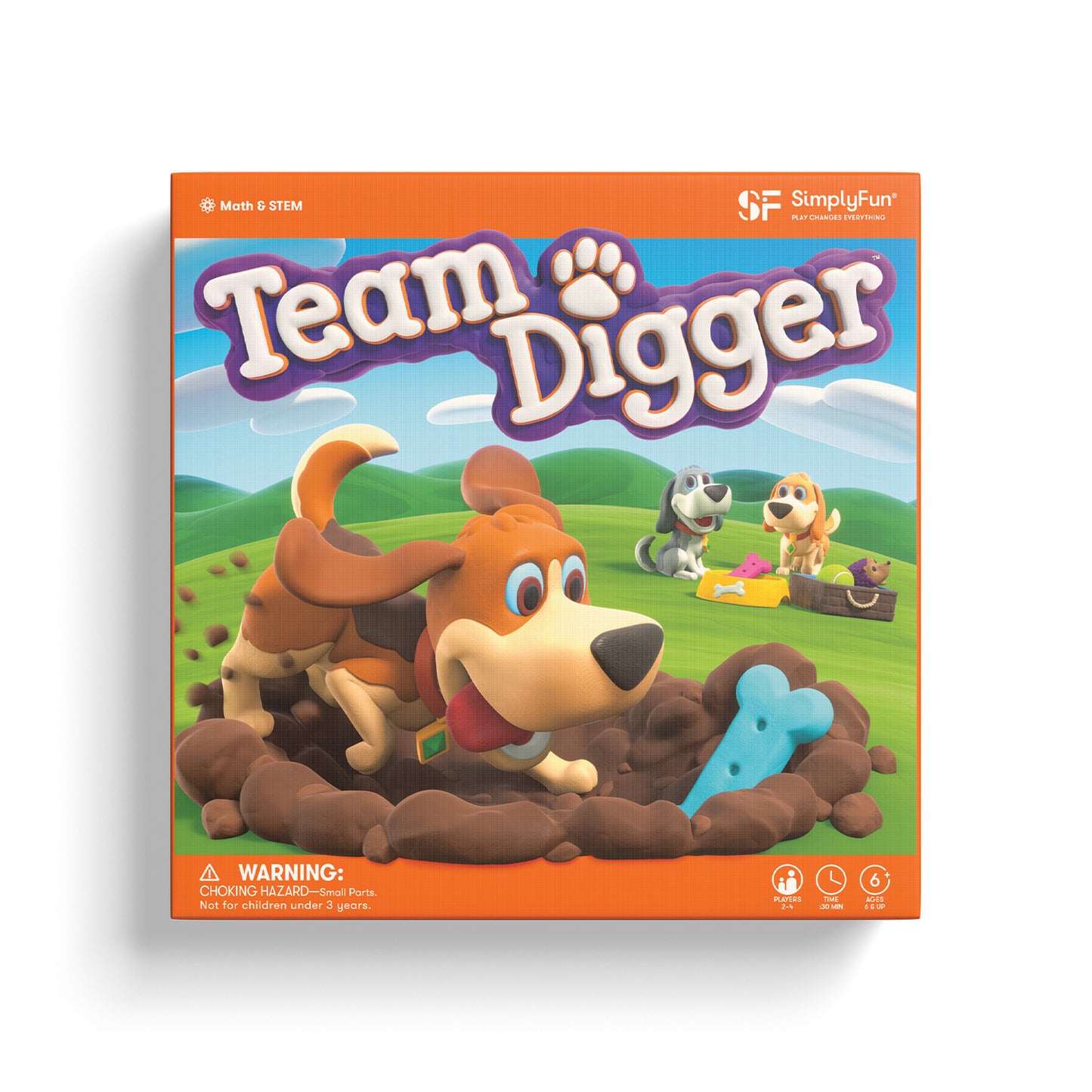
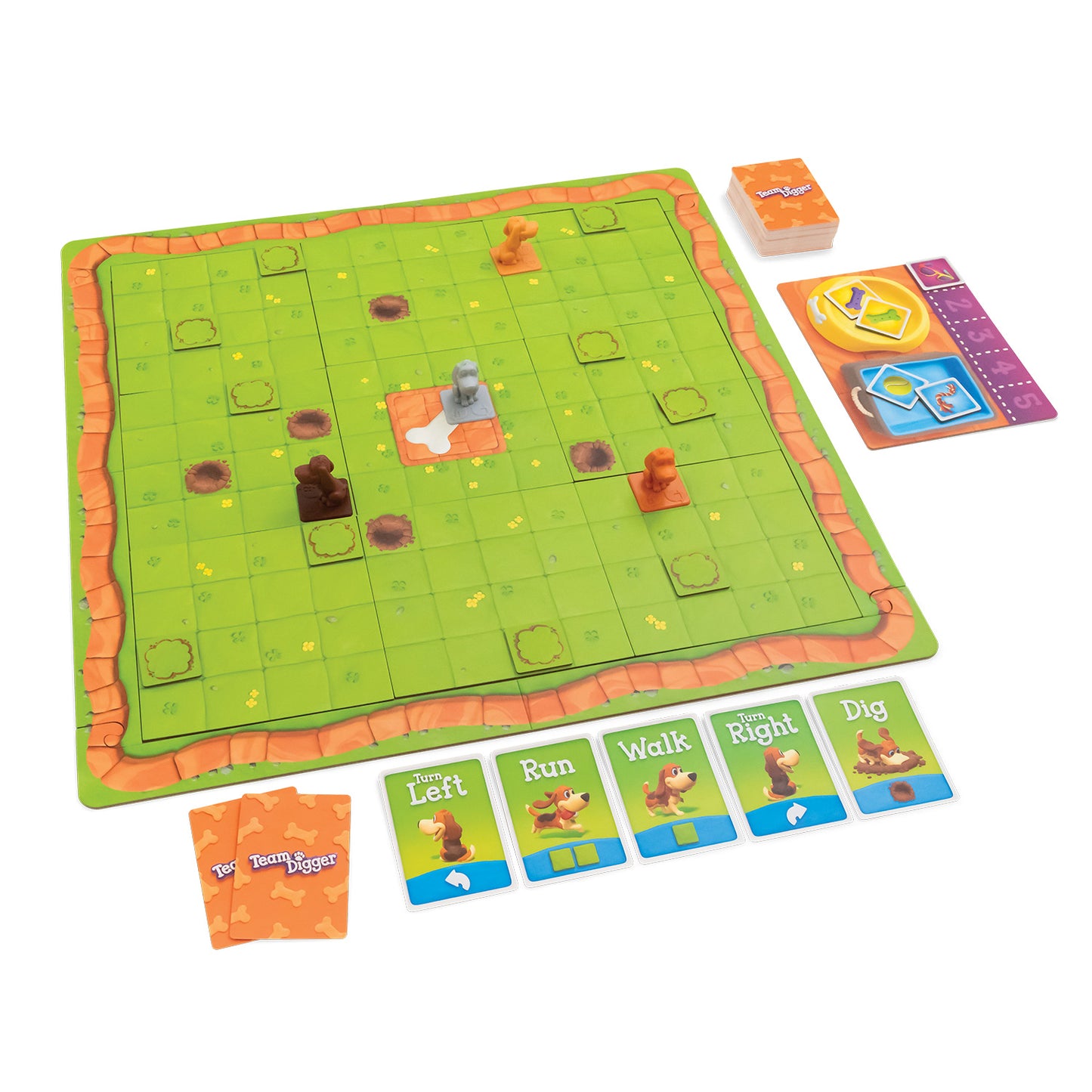
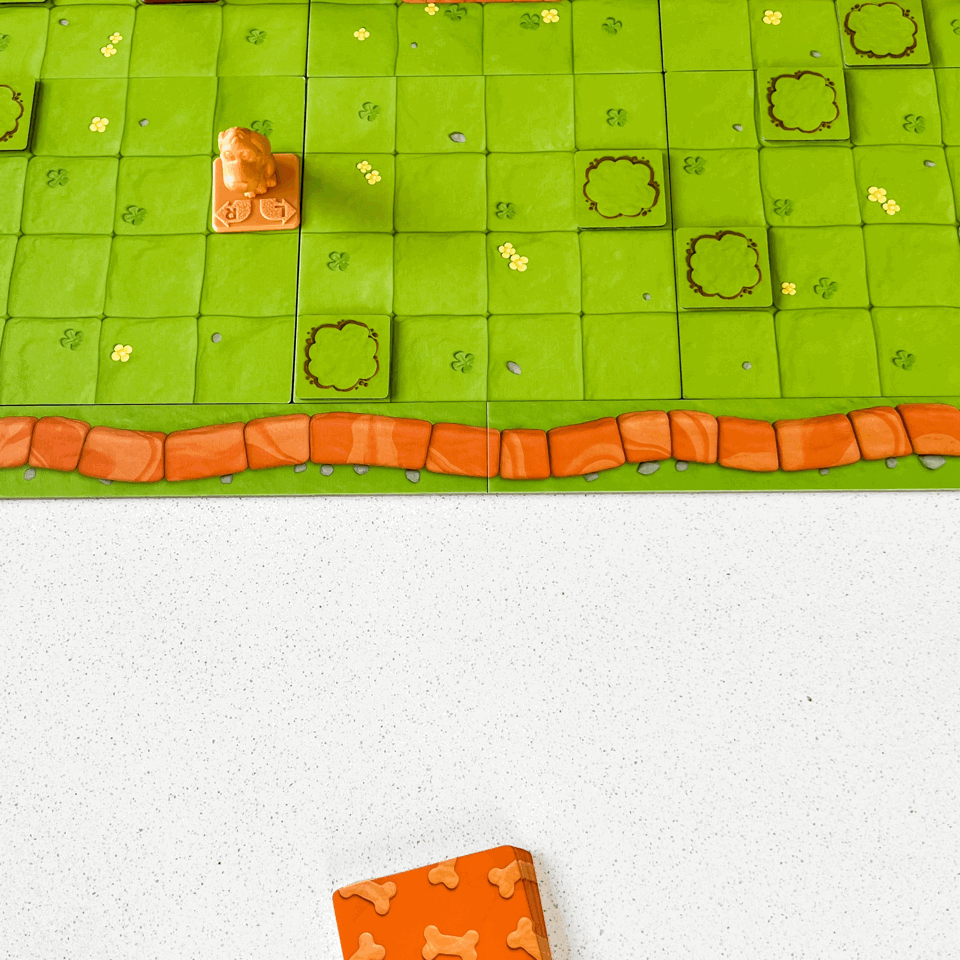
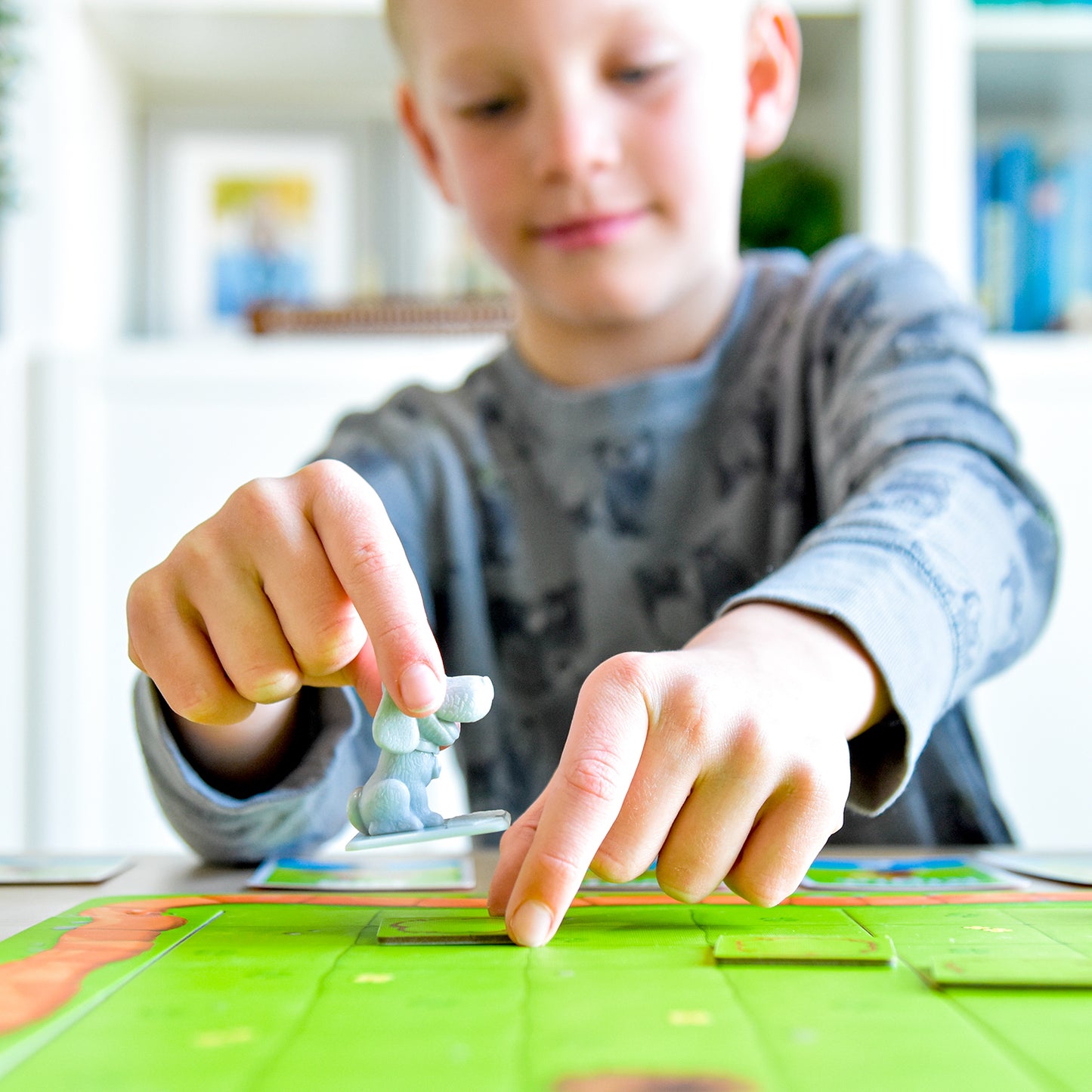
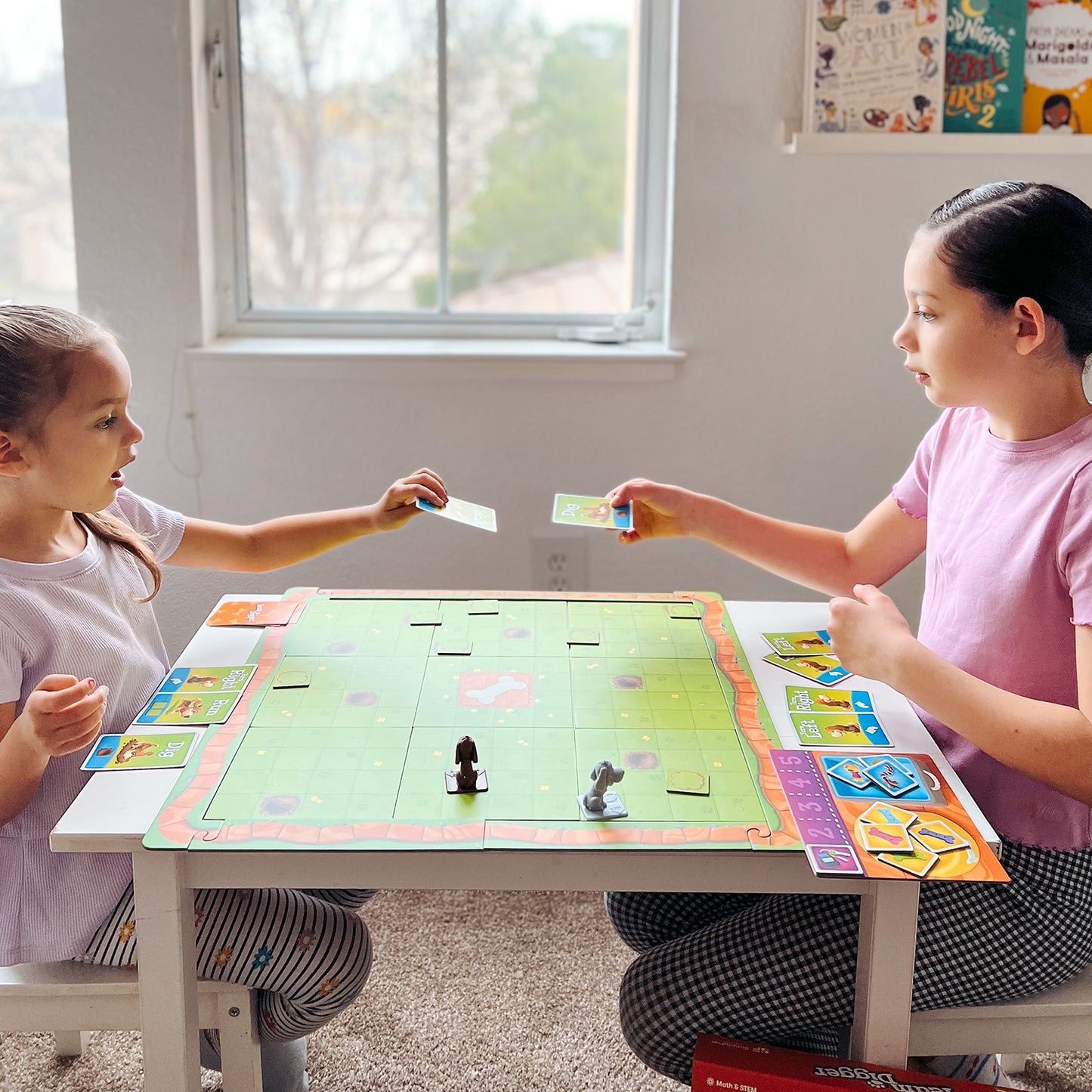
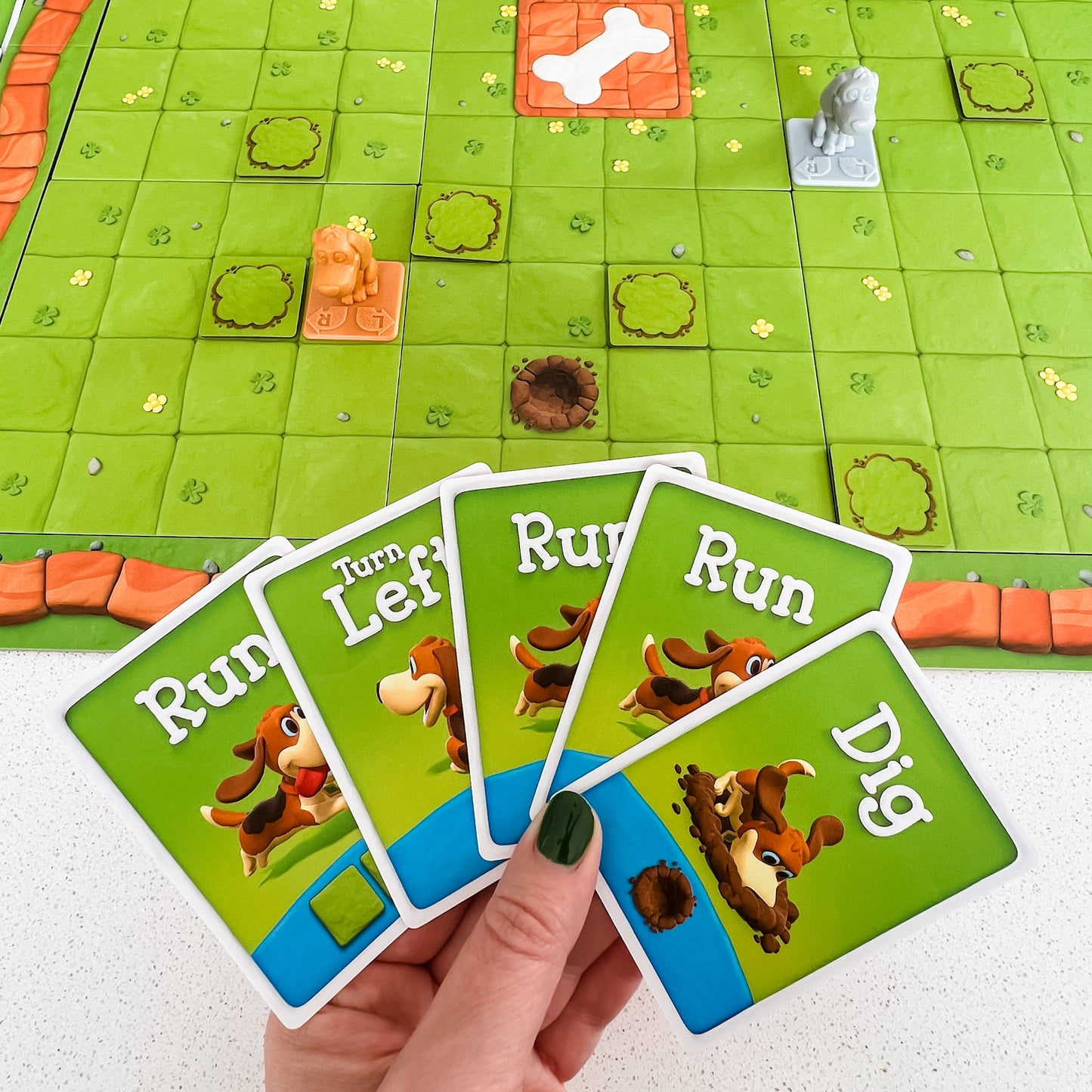
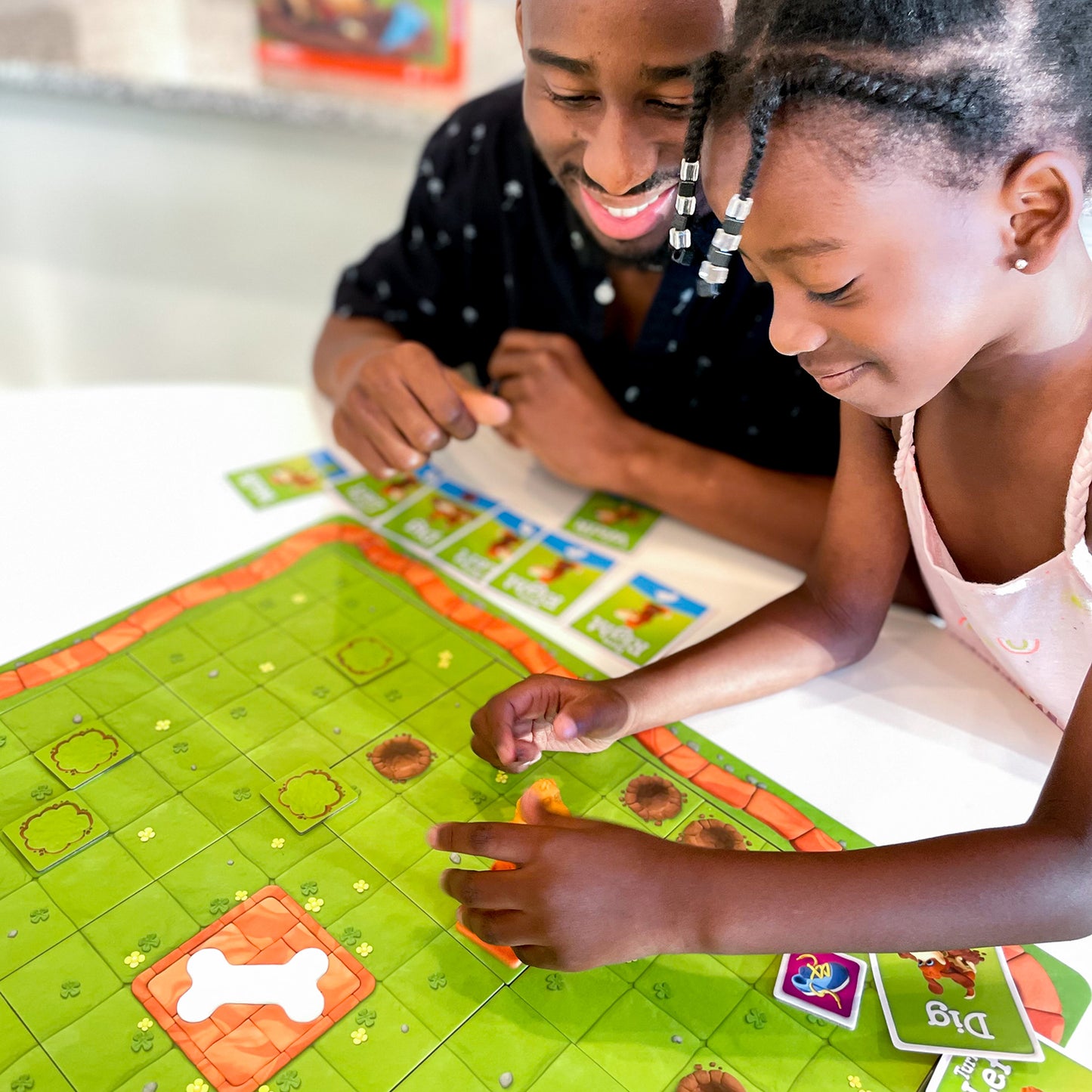
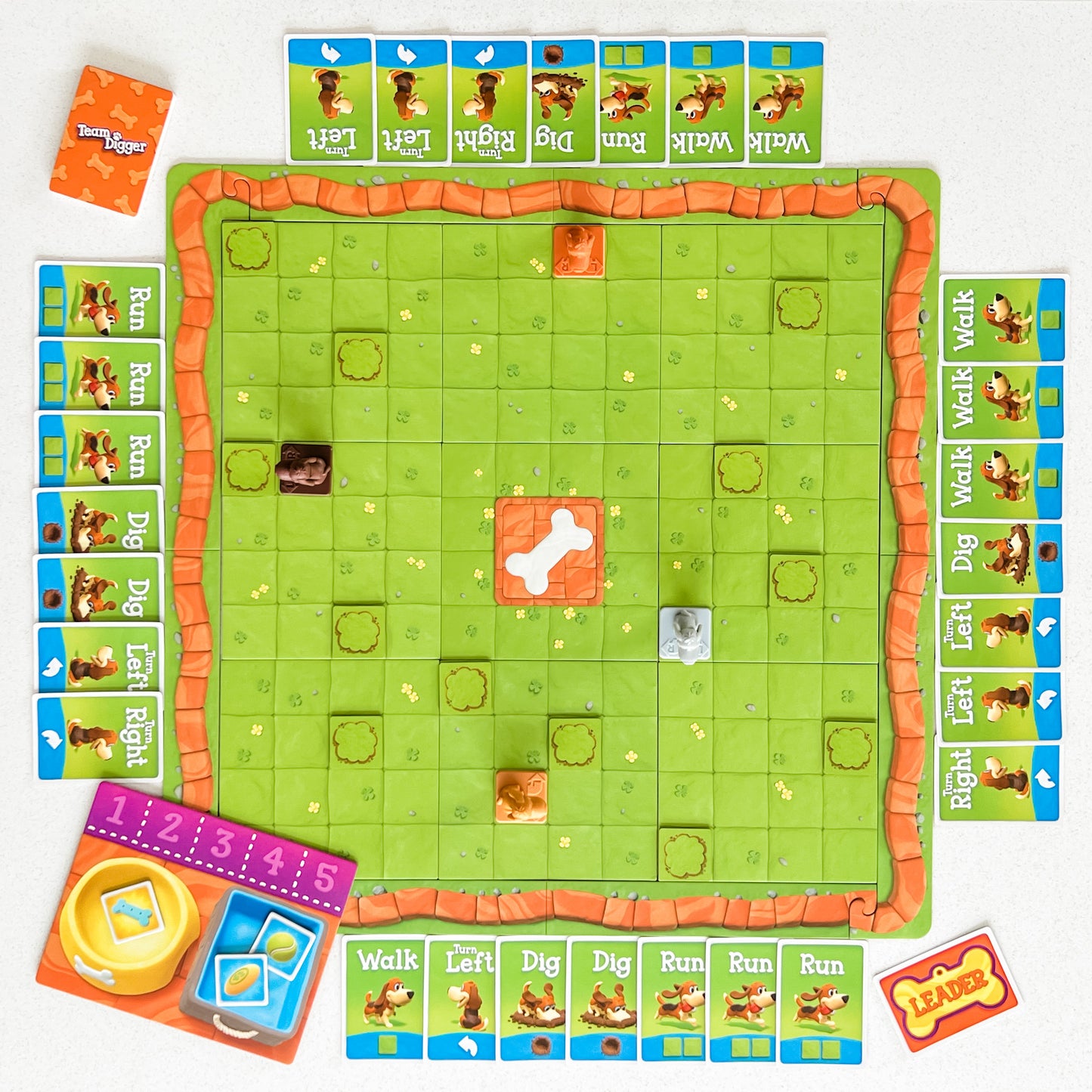
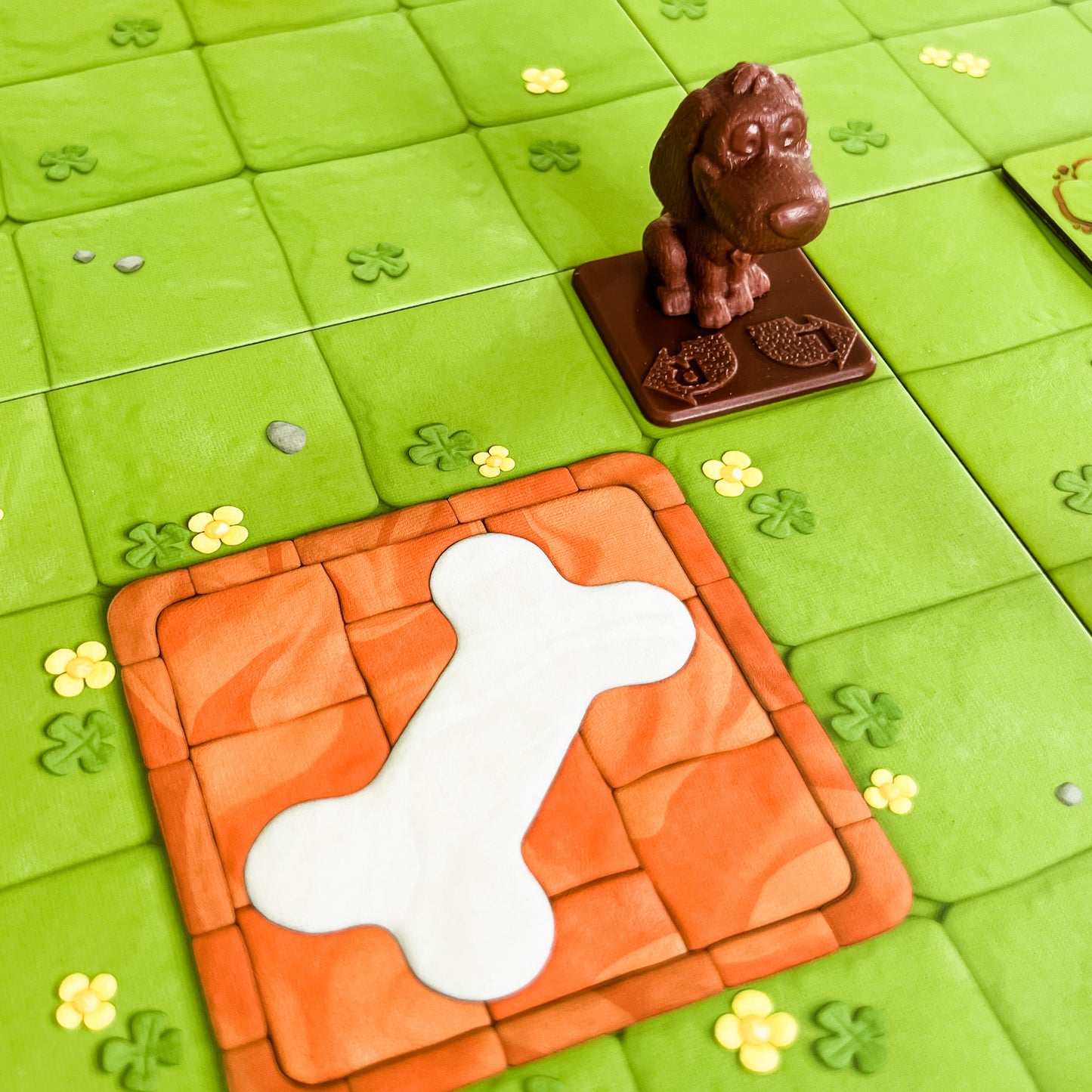
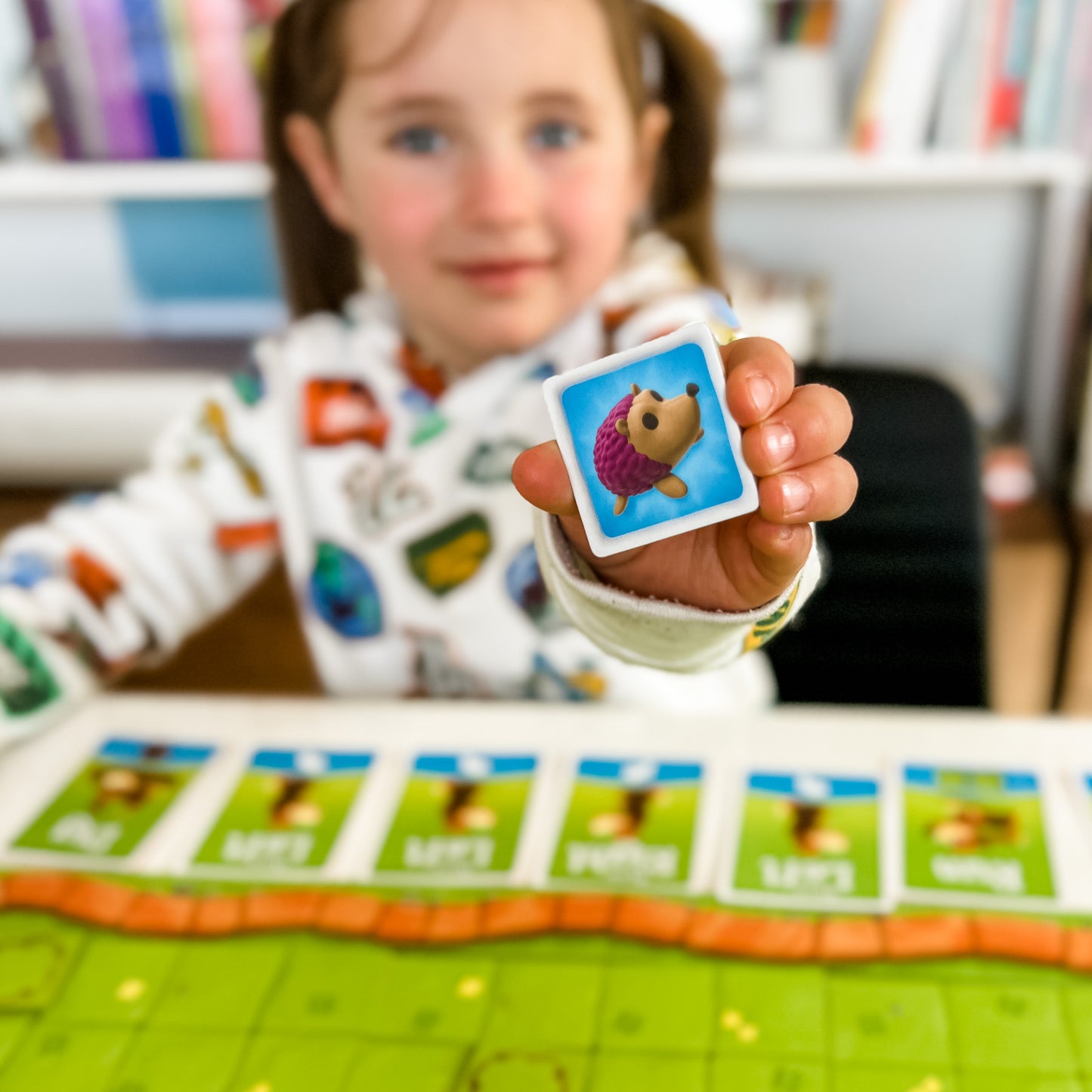
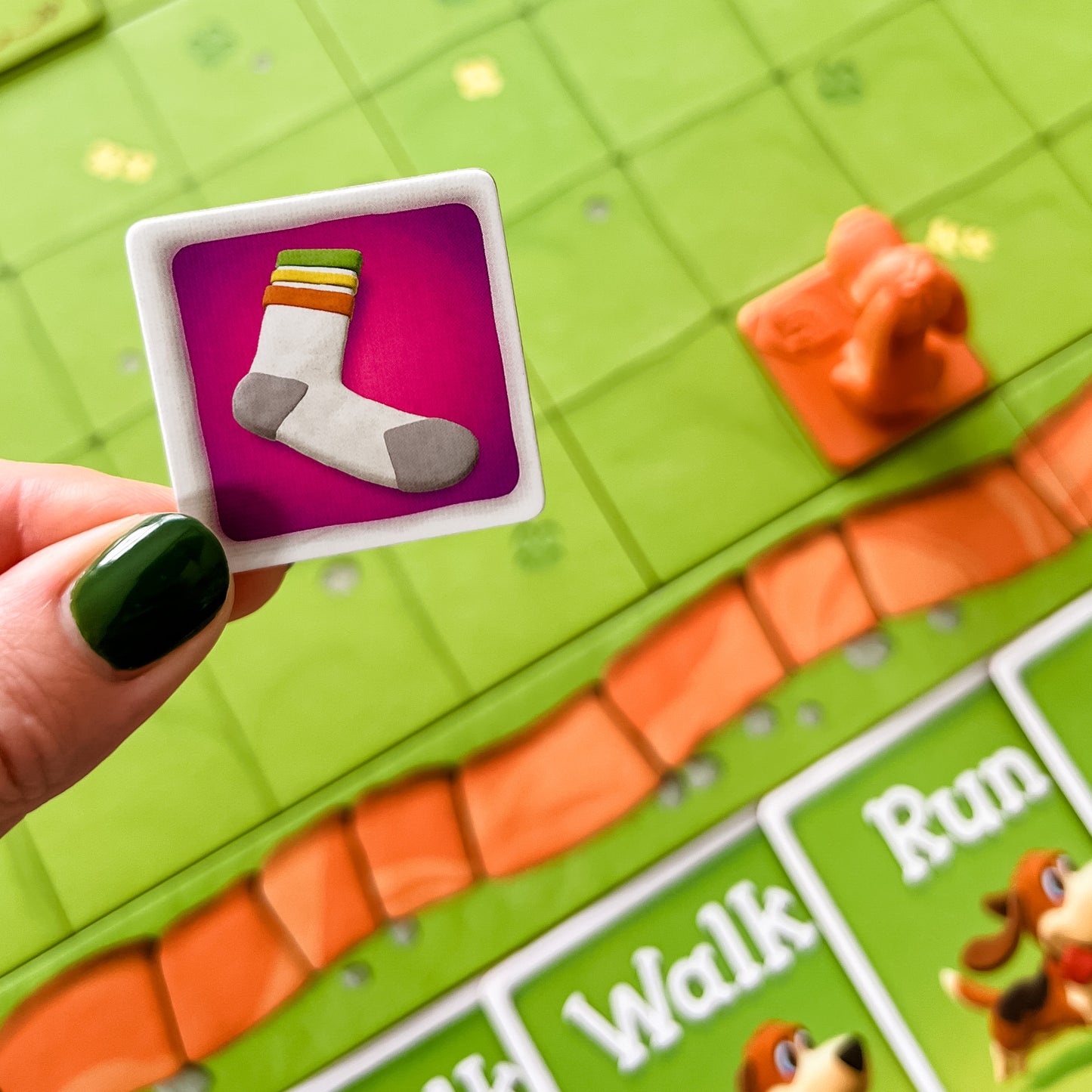
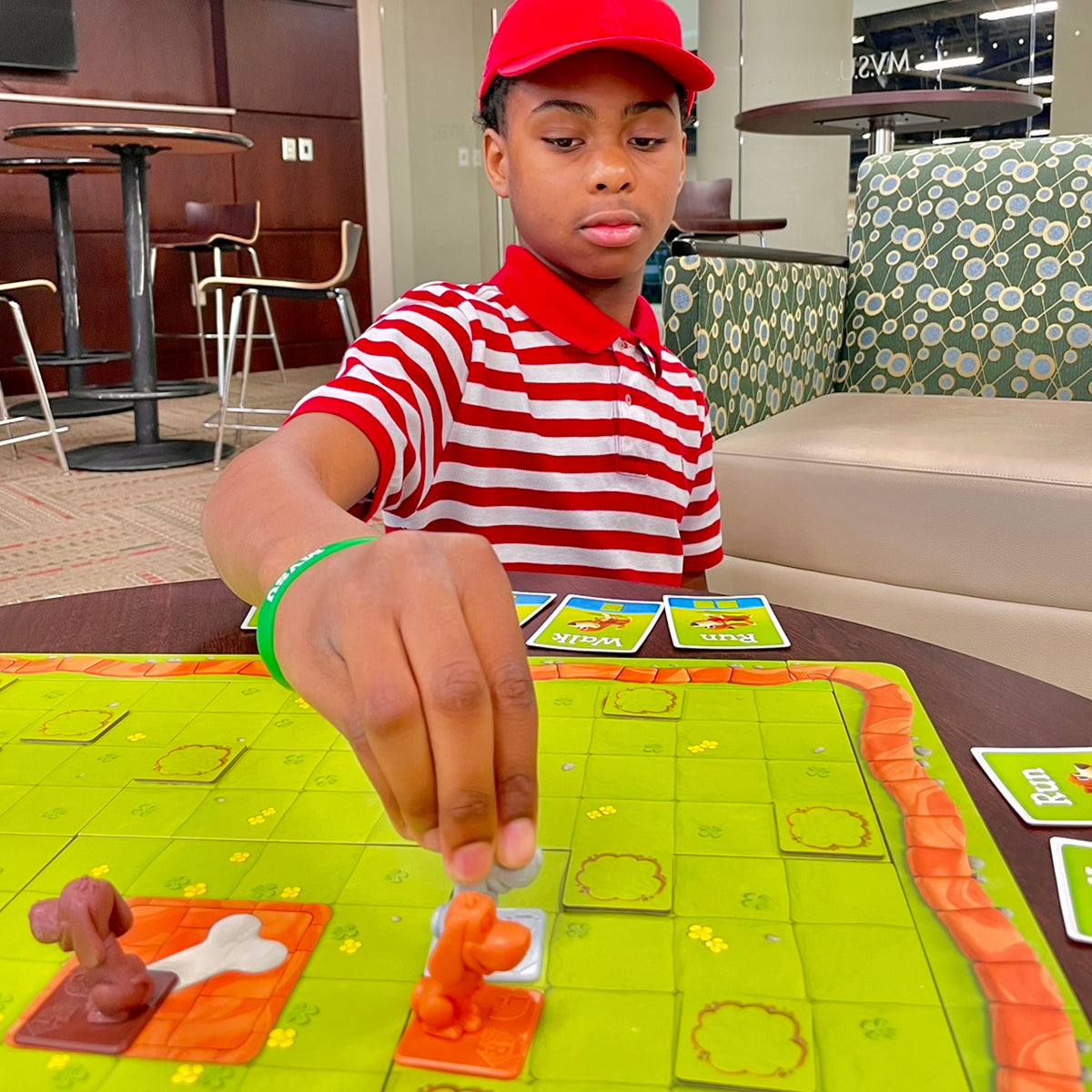
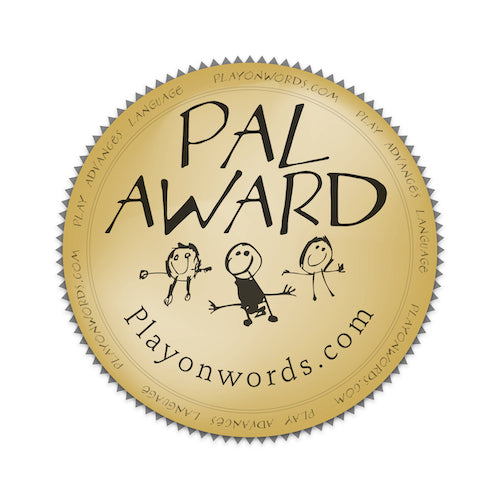

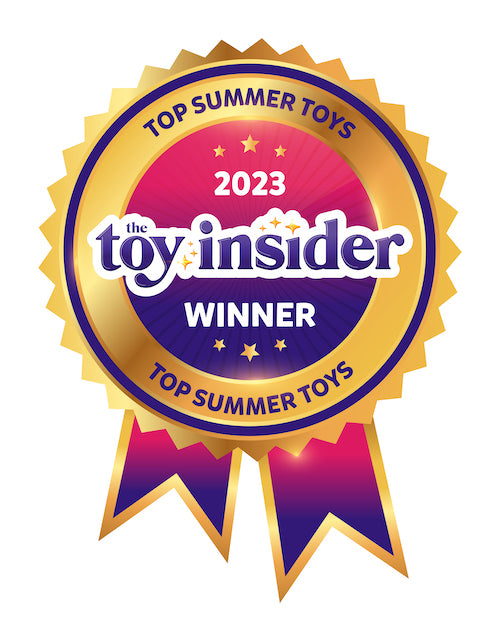



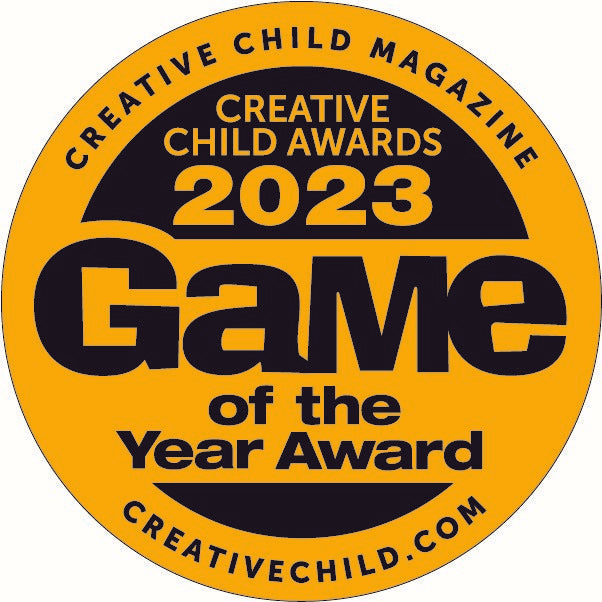
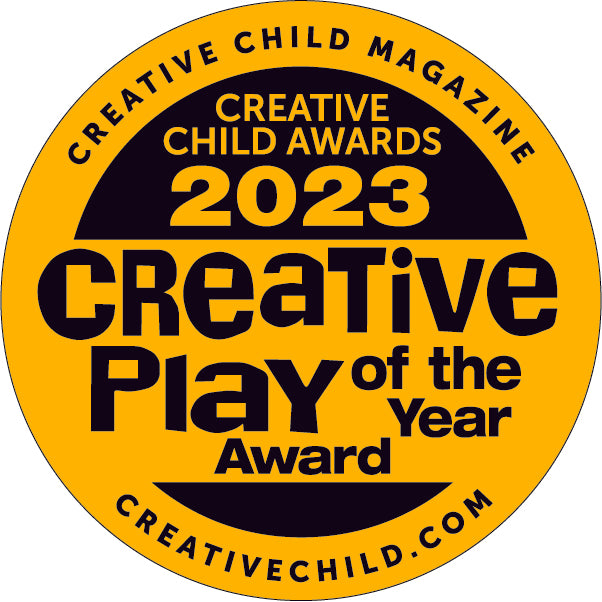
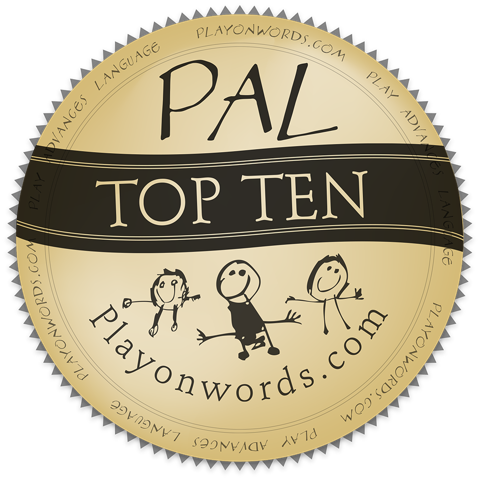
Collapsible content
How to Play
Educational Standards
Core Standard*: Math, Speaking & Listening
Math
- Make sense of problems and persevere in solving them. : Grade 1st, 2nd
- Construct viable arguments and critique the reasoning of others. : Grade Level 1st, 2nd
- Attend to precision : Grade Level 1st, 2nd
Speaking & Listening
- Comprehension and Collaboration : Grade Level 1st, 2nd
Skills
Explore
What Does Child Do To Use Skill In The Game?
Players need to look around the game board and discuss where to move their dogs next. Additionally, they need to examine each others' cards and discuss trading to that they can make the sequences for moving dogs and digging.
How Parents Can Assist Learning
To help children explore closely, parents can encourage them to through trading cards one person at a time to avoid confusion.
Learning Implications and Educator Support
Team Digger is a great way for children to learn collaboration and sharing as they discuss options for moving their dogs and who needs to trade cards with whom.
If you notice that children are not trading cards, encourage them to share their ideas for moving their own dog and ask the other children if they have ideas for better moves to make. Then they can work together to trade cards so the best sequence of moves can be made.
Determine
What Does Child Do To Use Skill In The Game?
There is a lot of determining in Team Digger including deciding whether to chase your tail, which cards to trade, the sequence of 5 cards to play, and the value of each object turned over after playing a dig card.
How Parents Can Assist Learning
In addition to the suggestion in the Explore section, parents can remind children about the Chasing Your Tail option. This is a good way for children to explore and determine whether to proceed with digging up or avoiding an object tile.
Learning Implications and Educator Support
Team Digger builds sequential thinking and logic as each child, with the help of others, decide which 5 cards to play each turn.
Educators can ask questions such as "Would it help if anyone chased their tail this round?" and "Who has the best chance to dig up more than one spot?" to help guide discussion and decision making.
Compare
What Does Child Do To Use Skill In The Game?
As players explore and discuss where to move dogs, they need to evaluate options for which player(s) has best opportunity to get to dig site(s).
How Parents Can Assist Learning
If you notice that children are not making optimal choices for moving their dogs, encourage them to talk about their goals for this round. Then, encourage them to create different sequences of 5 cards. Lastly, have them talk through the different options to determine which are better than others.
Learning Implications and Educator Support
Playing Team Digger gives players an opportunity to develop skills in generating and comparing five-step solutions, which is an advanced form of comparison for young children.
To assist children, educators may want to have the players try out their sequences by physically moving their dog or using their fingers to touch the game board while reading the 5 cards in order. This can help children see and discuss the sequences prior to deciding which sequences to play.
Remember
What Does Child Do To Use Skill In The Game?
Memory is not a skill required in Team Digger. However, there is option in the game that does require remembering what is under a dig site.
How Parents Can Assist Learning
To add memory skill building to the game, any time a player uses "Chasing Your Tail" they will show it to all the other players and then turn it face down. This way, the children need to remember what is under that object card for future turns, otherwise they may miss getting a Wanted Item or Bone, or unintentionally dig up an Unwanted Item.
Learning Implications and Educator Support
To add memory skill building to the game, any time a player uses "Chasing Your Tail" they will show it to all the other players and then turn it face down. This way, the children need to remember what is under that object card for future turns, otherwise they may miss getting a Wanted Item or Bone, or unintentionally dig up an Unwanted Item.
Plan
What Does Child Do To Use Skill In The Game?
Planning is the primary skill involved in playing Team Digger as the players figure out how to sequence the five best moves for all players during a turn.
How Parents Can Assist Learning
It may help to encourage children to "Look. Think. Talk." This will help them spend time enough time considering where to move dogs, how to share cards to optimize paths and determine whether any player will chase its tail.
This will also help with impulsivity and decision-making. Using such verbal cues can give children a model for approaching future play as well as complex life choices.
Learning Implications and Educator Support
Children use and develop mental modeling, sequencing and visual spatial reasoning and planning as they conceive of the best sequence of five cards for each player to make.
Educators can create specific goals for children to achieve, such as "Everyone try to get to the closest (or farthest) object tile to their dog" or "At least one player needs to chase their tail this round", in order to guide planning and sequencing skill development.
Experiment
What Does Child Do To Use Skill In The Game?
Team Digger involves a little experimentation because there is so much planning. However, players can experiment with how much they use the Chasing Your Tail option.
How Parents Can Assist Learning
No special parent assistance is needed. If you notice children are not using the Chasing Your Tail option, you can remind them to consider it on the next round or two.
Learning Implications and Educator Support
No special educator assistance is needed. If you notice children are not using the Chasing Your Tail option, you can remind them to consider it on the next round or two.
Practice
What Does Child Do To Use Skill In The Game?
Players will get better at visual spatial reasoning and planning by playing repeated rounds of Team Digger.
How Parents Can Assist Learning
It may help children to act out a variety of five card sequences before selecting the final set of moves. They can do this by sequencing the five cards they think would be good to play, and then move their dog accordingly to see what happens.
Learning Implications and Educator Support
Because the spatial reasoning involves a lot of mental modeling, children may have difficulty selecting the most effective five card sequences.
To assist with learning, have children discuss what worked or did not work after each sequence is played. This also helps with developing cooperation and problem-solving skills.
Solve
What Does Child Do To Use Skill In The Game?
Team Digger is great for cooperative problem-solving as players discuss moves and sometimes trade cards to help each other create pathways to and dig up Object Tiles.
How Parents Can Assist Learning
Parents can encourage children to take turns helping each other figure out where to move their dog and which cards they need to achieve their goal. Additionally, ask the children to try to make trades that help each other achieve the group's goals.
Learning Implications and Educator Support
Playing Team Digger gives children an opportunity to develop planning, reasoning and problem-solving skills as they collaboratively generate and compare five-step solutions to develop strategies and approaches for winning the game.
To assist children, educators may want to have the players prototype sequences and discuss how the dogs will move to identify ways to improve the sequence. It may also help to have children help one player at a time to develop a five card sequence.
To help children improve problem-solving skills, educators may want them to talk about what happens each time they play a sequence. Did it go as expected? What have they learned by turning over Object Cards? What would they have done differently?
*Data compiled from CCSSI ELA Standards, WA Science Standards, and Washington Social Studies Standards
Special Needs
Cognitive
Suggestions for How to Modify Play Experience
Mark an 'L' on the left hand and an 'R' on the right hand of the child, as a cue for movement. After playing the game several times the child will learn the directions
Play with object tiles face up for the first round of play. This will enable the child to learn what are desirable and undesirable objects.
Wanted objects, unwanted objects, and bones all have different colored backgrounds to help differentiate them. Point this out to the child to help them remember the meaning.
Hold each card along with the dog as they make moves, so the child can see the relationship of the arrows to the movement of the dog.
Communication
Suggestions for How to Modify Play Experience
Talk through the moves with each card played to aid comprehension.
Talk through trades one person at a time to avoid confusion.
Encourage the quiet player to describe his cards and his thinking about possible moves. Invite other players to provide options for discussion.
Sensorimotor
Suggestions for How to Modify Play Experience
If one player is unable to move their dog, other players can move it on their behalf.
Social Emotional/Behavioral
Suggestions for How to Modify Play Experience
Because it is a team game, helping each other make decisions should reduce frustration.
Encourage asking for help in understanding what to trade or which dig site to head toward.
Discuss how trades should help both players, and discuss options.
Vision
Suggestions for How to Modify Play Experience
The back of the Object Tiles are the same color as the board, so this may make it difficult for children with low vision to see where to go with their dog.
Hearing
Suggestions for How to Modify Play Experience
Point to the cards as visual aids, along with gestures, for making trades.
*Data compiled from CCSSI ELA Standards, WA Science Standards, and Washington Social Studies Standards
Autism
Autism Strengths & Interests
Short Summary of Strengths & Interests
- Spatial awareness and reasoning
- Problem solving
- Cooperation
Is good at matching visual items
Is This Game Appropriate? No
Description
Players do not need to match visual items, but the need to understand what the picture on a card corresponds to in relation to a move on the board.
Has a good memory for sensory details, including visual, touch, taste and smell
Is This Game Appropriate? No
Description
A good visual spatial memory (how to coordinate movements to get to a desired spot) is helpful. Remembering previous sequences may also be helpful for planning new sequences.
Has a good memory for words, phrases and dialouge
Is This Game Appropriate? Yes
Description
Team Digger is a cooperative game, so accurate communication about what is needed is helpful. Players need to communicate what cards are needed. This game is not appropriate
Has a good memory for pictures, numbers and patterns
Is This Game Appropriate? Yes
Description
Team Digger requires players to plan movement patterns with pictures as a guide or possible moves. Quick translation of cards to movement on the board is needed. This game is not appropriate
Likes to put things in order or a sequence
Is This Game Appropriate? Yes
Description
The game is based on ordering or sequencing movements in the most efficient way. Ability to visualize movements without having to physically make the moves is beneficial.
Learns through visualizing or "replaying" actions in their mind
Is This Game Appropriate? Yes
Description
Players need to visualize movements without having to physically make the moves to play the game well.
Likes activities with rules, such as math and phonics
Is This Game Appropriate? Yes
Description
Team Digger requires visual spatial reasoning to determine which path will enable the player to reach a desired spot on the board.
Is very concrete and literal
Is This Game Appropriate? Yes
Description
While the spatial reasoning is challenging, the cards and corresponding movement of the dogs is straightforward and literal.
Learns in small "chunks" (for example, phone numbers are 3 chunks of number xxx-xxx-xxxx that are combined together)
Is This Game Appropriate? Yes
Description
The game requires players to sequence five cards in each turn
Is good at nonverbal reasoning and logic
Is This Game Appropriate? Yes
Description
The game requires nonverbal, spatial reasoning, but also requires player to think about options by looking at other players cards and imagining how one of their cards might assist in reaching the desired object tile.
Likes spatial problem solving
Is This Game Appropriate? Yes
Description
Spatial problem-solving is foundational to Team Digger, thereby, giving players repeated opportunities to use and improve their spatial reasoning and awareness skills.
Can read well with good vocabulary, though may not fully comprehend content
Is This Game Appropriate? No
Description
Players only need to interpret the meaning of the pictures on their cards to know how they can move their dog pawn.
Likes to use and has good fine motor skill
Is This Game Appropriate? Yes
Description
Dog pawns are manipulated in all directions on the board, so some basic fine motor skills are needed to follow the directions.
Likes established routines or set ways of doing things
This game is not appropriate
Likes manipulating, constructing or building things
This game is not appropriate
Likes to use and has good musical abilities
This game is not appropriate
Likes to use and has good drawing skills
This game is not appropriate
Autism Special Considerations
Appears to ignore other's communication and/or has difficulty giving eye contact to a communication partner
Is This Game Appropriate for Child with Characteristic? No
Can Child with Characteristic Play Game w/o Modification? No
Strategies for Developing Compensatory Skills:
This is a team game, so players need to pay attention to others' needs. Players need to be able to see what others have, listen to them, check their cards, and respond when a trade is needed.
Has difficulty understanding complex verbal directions
Is This Game Appropriate for Child with Characteristic? No
Can Child with Characteristic Play Game w/o Modification? Yes
Strategies for Developing Compensatory Skills:
Although the directions are complex, the visuals are clear and the team can help children play through a turn one-step-at-a-time
Uses vocabulary inaccurately or demonstrates echolalia (repeating another's speech)
Is This Game Appropriate for Child with Characteristic? No
Can Child with Characteristic Play Game w/o Modification? Yes
Strategies for Developing Compensatory Skills:
Players need to be paying attention to the board and what other players are saying. The topic needs to remain with the purpose of the game.
Gets stuck repeating a verbal topic or physical actions and/or has difficulty attending to others' actions or topic.
Is This Game Appropriate for Child with Characteristic? No
Can Child with Characteristic Play Game w/o Modification? No
Strategies for Developing Compensatory Skills:
Players need to be paying attention to the board and what other players are saying, therefore, repeating speech or physical actions would be too distracting to play Team Digger.
Has difficulty producing speech/communication
Is This Game Appropriate for Child with Characteristic? No
Can Child with Characteristic Play Game w/o Modification? Yes
Strategies for Developing Compensatory Skills:
Players need to be able to indicate what cards they need to get to a dig site. They may be able to do this nonverbally by pointing to others' cards and holding up the card they want to trade. Other players may also be able to verbally assist the player.
Has difficulty sequencing multi-step actions and/or doing complex abstract tasks
Is This Game Appropriate for Child with Characteristic? No
Can Child with Characteristic Play Game w/o Modification? No
Strategies for Developing Compensatory Skills:
Multiple steps are involved in each turn, both moving the dog pawns and looking for where trades can be made to complete a trip to an object tile.
Demonstrates difficulty initiating and maintaining social interactions
Is This Game Appropriate for Child with Characteristic? No
Can Child with Characteristic Play Game w/o Modification? No
Strategies for Developing Compensatory Skills:
Social interactions are needed in each turn, as players examine the board, their cards, others' cards and which cards are needed for a trade.
Acts out or demonstrates avoidance behaviors when frustrated, overwhelmed, or needs more sensory input.
Is This Game Appropriate for Child with Characteristic? No
Can Child with Characteristic Play Game w/o Modification? No
Strategies for Developing Compensatory Skills:
Although fidget toys are often useful when a child with autism is frustrated, the nature of Team Digger requires the player to concentrate on their own and others cards
Has short attention span for non-preferred activities
Is This Game Appropriate for Child with Characteristic? No
Can Child with Characteristic Play Game w/o Modification? No
Strategies for Developing Compensatory Skills:
If spatial reasoning and/or cooperative games are not preferred activities, the child will have difficulty maintaining attention and interacting with others.
Needs sameness or consistent routines and/or has difficulty with transitions from one activity to another
Is This Game Appropriate for Child with Characteristic? No
Can Child with Characteristic Play Game w/o Modification? No
Strategies for Developing Compensatory Skills:
Although the pattern of play is the same in each turn, all players are looking and talking, often at the same time. This may be confusing or frustrating for the child who has difficulty attending to social situation. Players also may need to shift their thinking if someone else gets to their dig site first or if new cards are acquired, requiring the child to change plans.
Has difficulty understanding others' feelings, intentions, and the reasons for others' actions.
Is This Game Appropriate for Child with Characteristic? No
Can Child with Characteristic Play Game w/o Modification? No
Strategies for Developing Compensatory Skills:
Team Digger is a game requiring players to cooperate and understand others' intentions and needs. This may be difficult for children with autism
*Data compiled from CCSSI ELA Standards, WA Science Standards, and Washington Social Studies Standards
Extended Play
Extra Ways to Play the Game
If you get all wanted objects before the game is over, you only need to collect 3 bones.
Materials Needed
No additional materials are needed.
Developmental Benefits
This modification provides and incentive for the players to use the "chase your tail" strategy so they can peek to ensure they are going for a desired object.
*Data compiled from CCSSI ELA Standards, WA Science Standards, and Washington Social Studies Standards
Collapsible content
How to Play Video & Transcript
A cooperative game where players learn early coding skills while trying to dig up all the bones before the other hidden items.
You can play Team Digger with 2-4 players or in teams, ages 6 and up!
Team Digger is a great game for developing Sequencing Skills like those used in coding activities. Using five cards at a time, players choose dig sites they want to move to, and plan how best to move their pawn there. Players work together sharing their cards to make the ideal sequence
Team Digger also helps develop Spatial Reasoning Skills as players examine the board to figure out the best path for their dog pawns to reach their selected dig sites.
To set up the game, assemble the board frame and place it in the center of the play area where everyone can reach.
Place the dog park board with the bone on it in the center of the frame.
Place the other eight dog park boards around the center tile, creating a 12 x 12 square board inside the frame.
Turn the bone and object tiles facedown and mix them up.
Randomly place the mixed-up tiles on the dig sites around the board without looking at them.
Place the collection board next to the gameboard.
Each player chooses a dog pawn and places it on the center bone space, facing any direction.
Shuffle the cards and place the deck near the board.
Give each player seven cards. Players place them faceup in front of them.
The object of Team Digger is to play together cooperatively, with each player creating a five-card sequence, forming step-by-step instructions, so that their dog travels from one dig site to another, digging up what is buried there. Players win as a team when they find all four bones before they dig up five of the unwanted objects.
Cooperatively, players discuss their plans to find the buried bones, trade cards and work as a team to cover the most area. Each player moves their own dog pawn on their turn.
NOTE: If you are playing with younger kids who need some help or wish to elect a team leader, make sure that you take turns, letting others take the lead so they can learn and understand too.
Cards and Movement
There are five different types of cards:
Walk: Allows your dog to move one square in the direction they are facing.
Run: Allows your dog to move two squares in the direction they are facing.
Turn Left: Allows your dog to turn and face its left. The dog will stay in the same square but rotate to face the new direction.
Turn Right: Allows your dog to turn and face its right. The dog will stay in the same square but rotate to face the new direction.
Dig: Allows your dog to collect the object tile they are currently standing on. If your dog is not on an object tile, nothing happens.
The dog pawns feature “L” and “R” arrows to help players determine left and right more easily.
Using and Trading Cards
Using the cards in front of them, including the cards they have traded for, each player creates a five-card sequence to lead their dog to the object they wish to dig up.
Even if fewer cards are needed to get to a dig site, look ahead to the next spot you want to dig at and use your cards to continue to move. A card sequence should always be five cards.
Players will want to trade cards to help each other complete their goals.
Players can trade one card for another at any time, even after other players have moved. However, once a card has been played in a sequence to move a dog pawn, it may not be traded. Players may trade as many cards as they like with one another.
When all players have created their five-card sequences, discuss who should go first based on your goals and then each player takes their turn by moving their dog pawn, following the directions on their cards.
Moving Your Dog Pawn
Your dog follows the directions in the order you have placed your cards. Dogs can move into and out of the center square and may choose which direction they wish to exit when leaving. Dogs cannot exit the center square diagonally. When moving through the center square, it counts as one square.
• Dogs may not move diagonally.
• Dogs can only walk or run in the direction they are facing.
• Turning your dog does not move them forward, it only changes the direction they are facing in the current square.
• Dogs may not stop on the same square so they must stop on the square before.
• Dogs may move past each other if they have enough movement commands to do so.
Chasing Your Tail
Sometimes the cards you have available are not as helpful as you would like. Or you may just want a little extra help. A player may choose to “chase their tail” on a turn. If you play any four “turn” cards in your five-card sequence, you may choose to take a peek at one hidden object tile.
When chasing your tail, be mindful of the direction you will end up facing when selecting your cards!
Once you’ve looked at the tile, you may keep it faceup on the board. If someone is going to peek, they should go first so everyone else knows what it is and can decide if it is worth digging up.
If the object you peeked at is a bone, you will definitely want to go dig it up! If the object is a wanted item, you may choose to dig it up. However, if the object is an unwanted item, you will want to avoid digging it up.
Remember you are playing as a team, so it is always helpful to discuss your plans with the other players. It may be best to have one player take a peek at an object before you dig it up, especially as you start to have more than three unwanted objects on the collection board.
Change of Plans
Based on what other players find, you may change your plans if you have not moved yet. This includes trading cards with other players. Players who have moved will have only two available cards left to trade.
Mistakes
Did you turn the wrong way? Or not end on the square you thought you would? Mistakes happen; that’s okay. Your turn is still over, and you can try again on your next turn.
Digging Up an Object
Dogs can only dig up an object if they have landed on top of an object tile and a dig card is played. This can happen at any point in your card sequence, even more than once!
If a dog lands on top of an object but no dig card is played, then the tile stays on the board.
If you dig on an empty square, nothing happens.
After digging up an object, place it on the collection board so everyone can see it and keep track of what you have found.
Wanted Objects
These objects, while not bones, make the dogs happy and don’t count against you. Place these tiles on the toy basket on the collection board.
Unwanted Objects
These objects are not what the dogs are looking for. If you dig up too many of these, you may lose the game. Place these tiles along the numbered strip on the collection board to track how many you have dug up. Remember that if you start to get too many of these, it is a good time to use the “chase your tail” option and take a peek at the tiles before you dig.
Bones
There are four bone tiles in the game. To win the game together as a team, you must dig up all the bones before five unwanted items have been dug up. Place these tiles on the dog bowl on the collection board.
Next Round
After everyone has taken their turn, each player places their used cards in the discard pile and draws five new cards, returning their total to seven cards. If the card deck runs out, reshuffle the cards, and keep playing. Play then continues in a new round, with each player creating their next five-card sequence.
The game can end in two ways.
If five unwanted objects have been dug up before you have dug up all the bones, you did not win.
If all four bones have been dug up before five unwanted objects are dug up, everyone wins!
Dig as a team, learning coding skills, and see how many bones you can find when you play Simply Fun’s Team Digger.
Game Reviews & Features
-
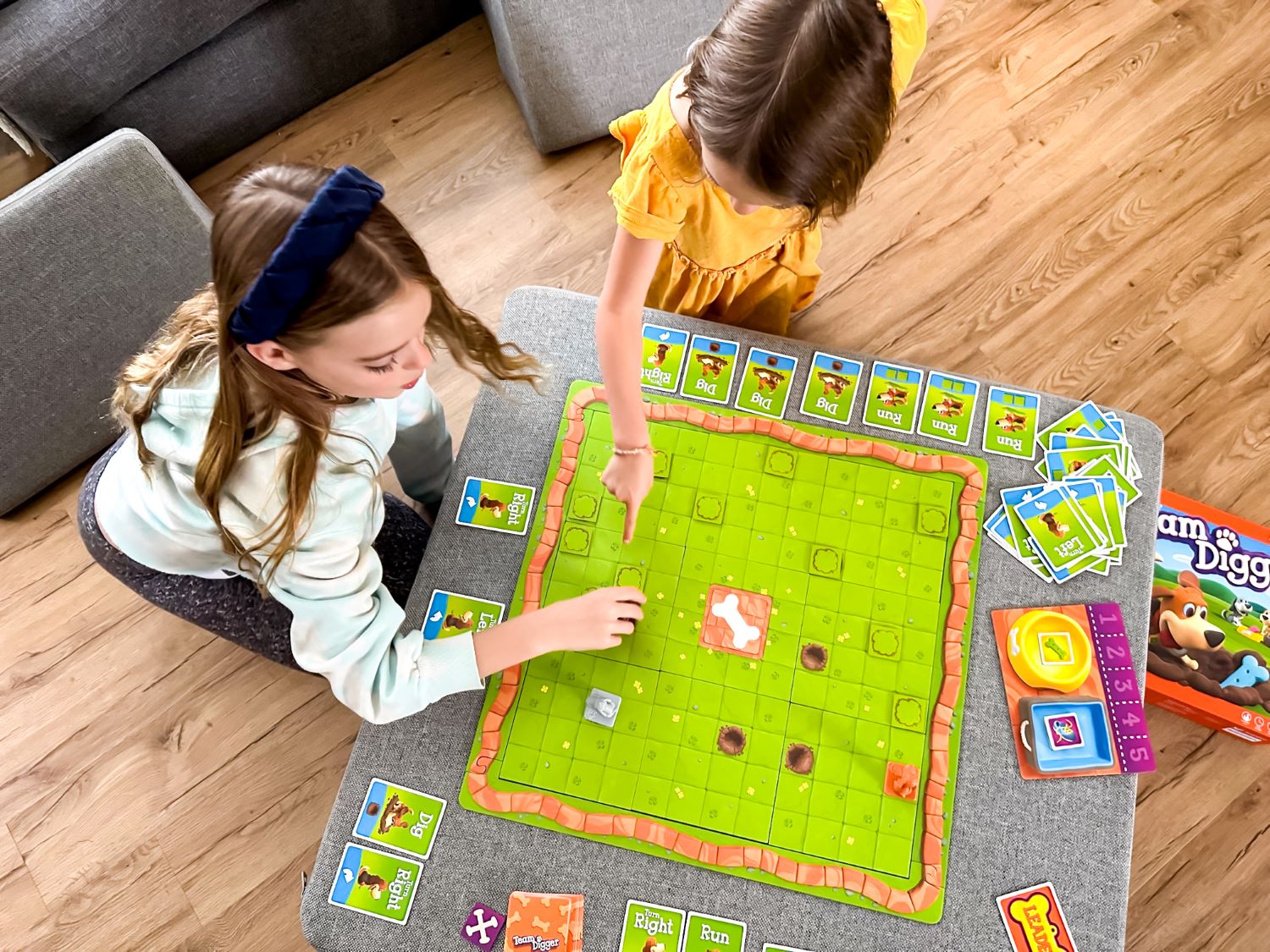
Team Digger review in The Homeschool Scientist
The Homeschool Scientist - Team DiggerThis science-focused teaching resource for parents, students, and teachers provides a thorough and thoughtful review of Team Digger including an in-depth look on how-to-play, skills built while playing, how to add the game to a homeschool or classroom curriculum, and more.
-
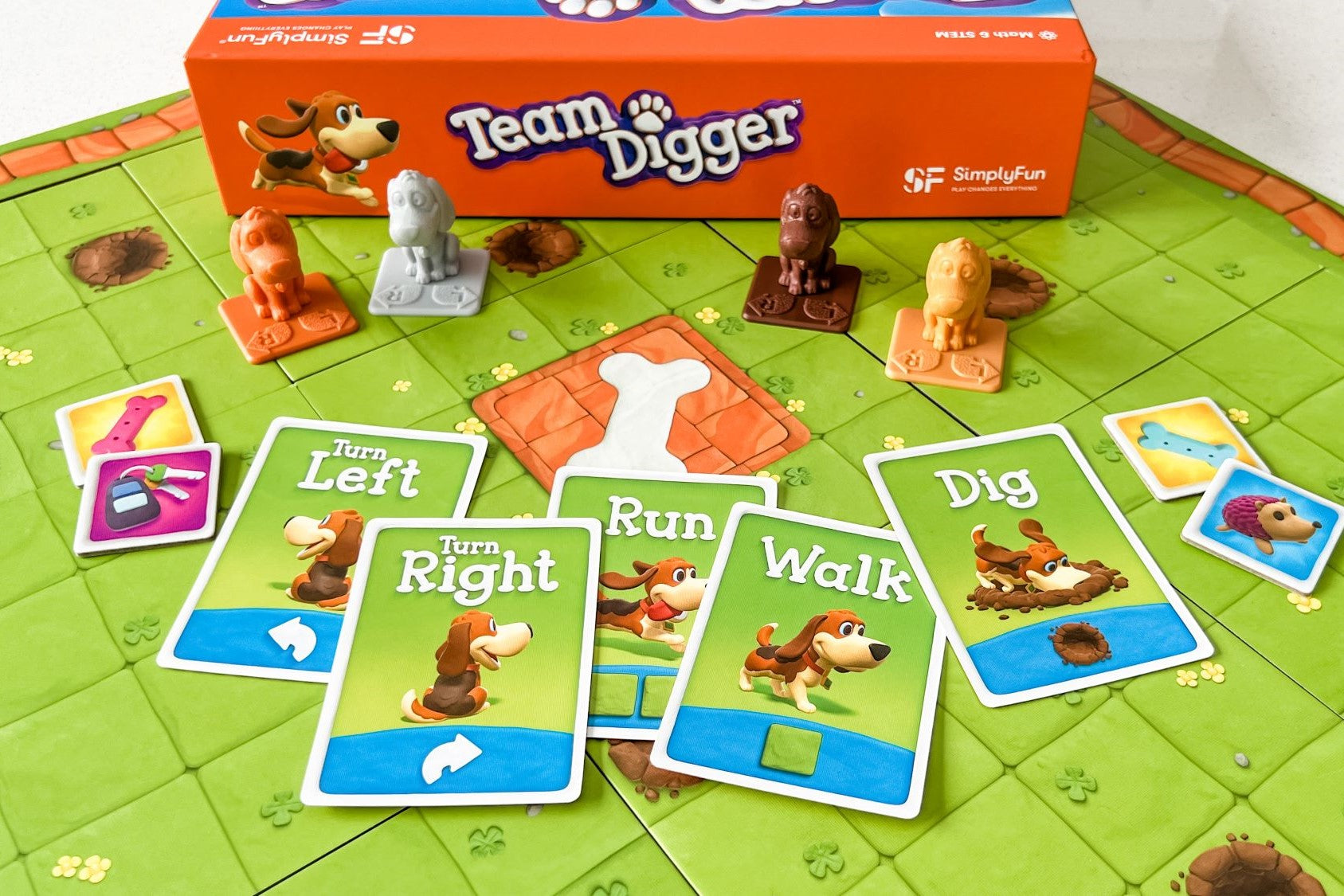
Game Cows review of Team Digger
Game Cows - Team DiggerThis board game enthusiast website provides an in-depth review of Team Digger and why it’s fun for young children, compelling for adults, and has educational value.
-
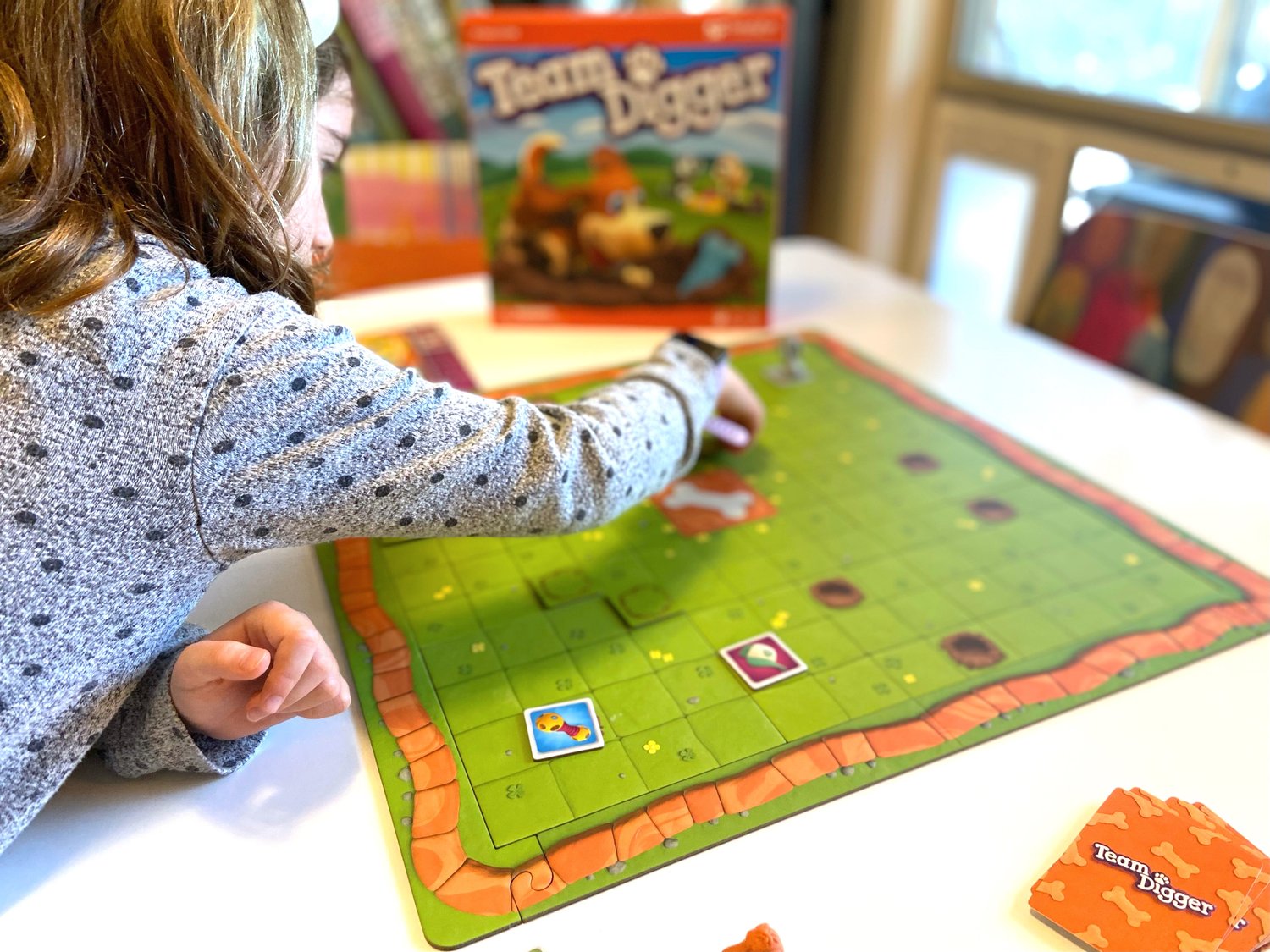
Introduce Your Children to Coding with Team Digger
Dad Suggests - Team DiggerPrepare little ones for coding with Team Digger while flexing their cognitive muscles and practicing planning ahead, visualization, and spatial reasoning.
-
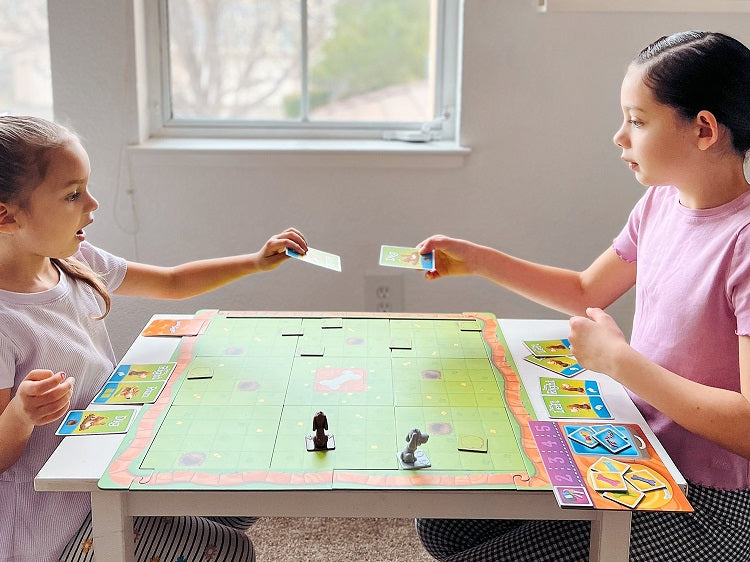
Team Digger on ABC9 Back-to-School Segment
Team Digger featured on ABC9Speech-language Pathologist and toy expert Erika Cardamone presents the perfect back-to-school games that embrace a new way of learning through play.
- Choosing a selection results in a full page refresh.
- Opens in a new window.

